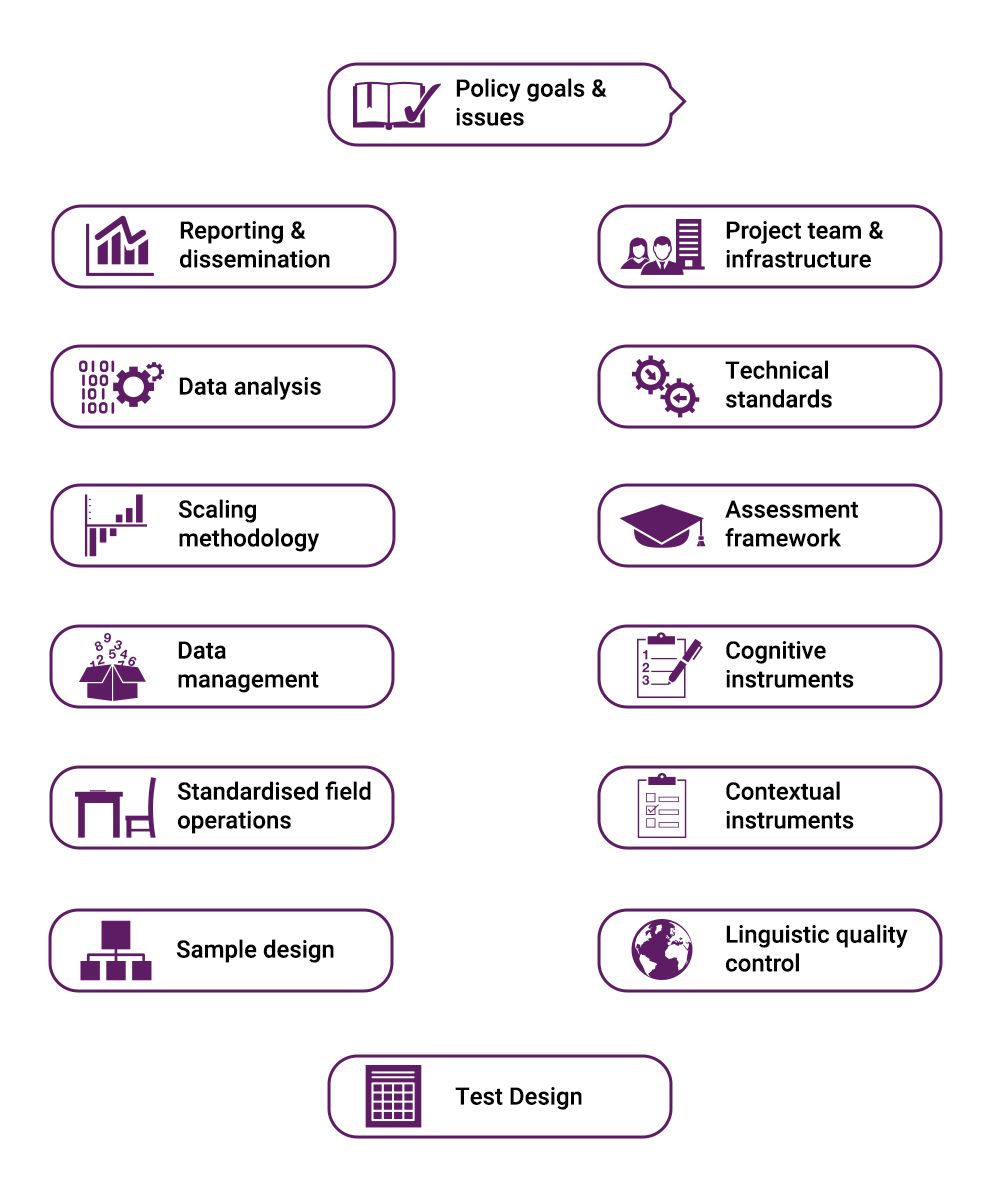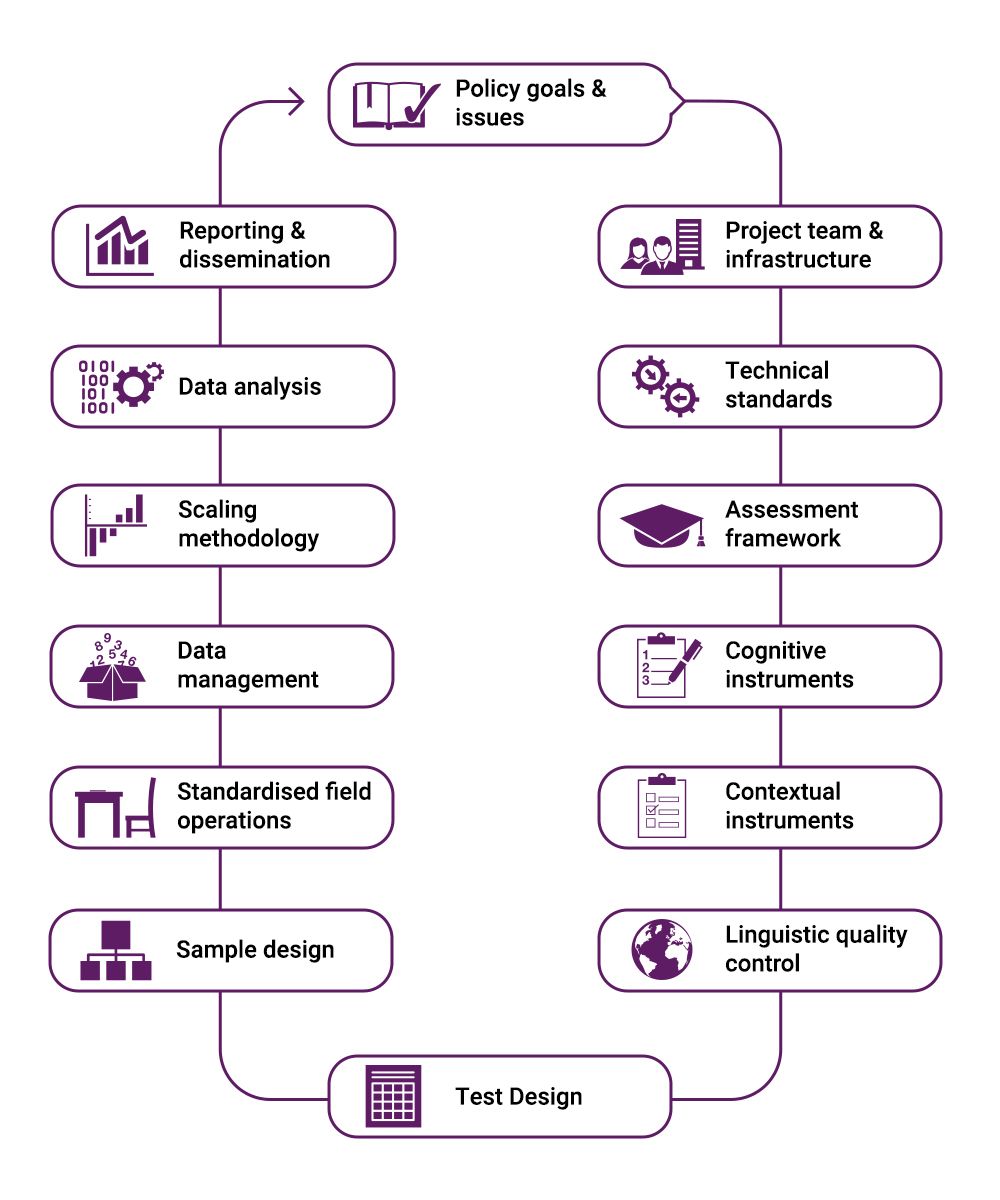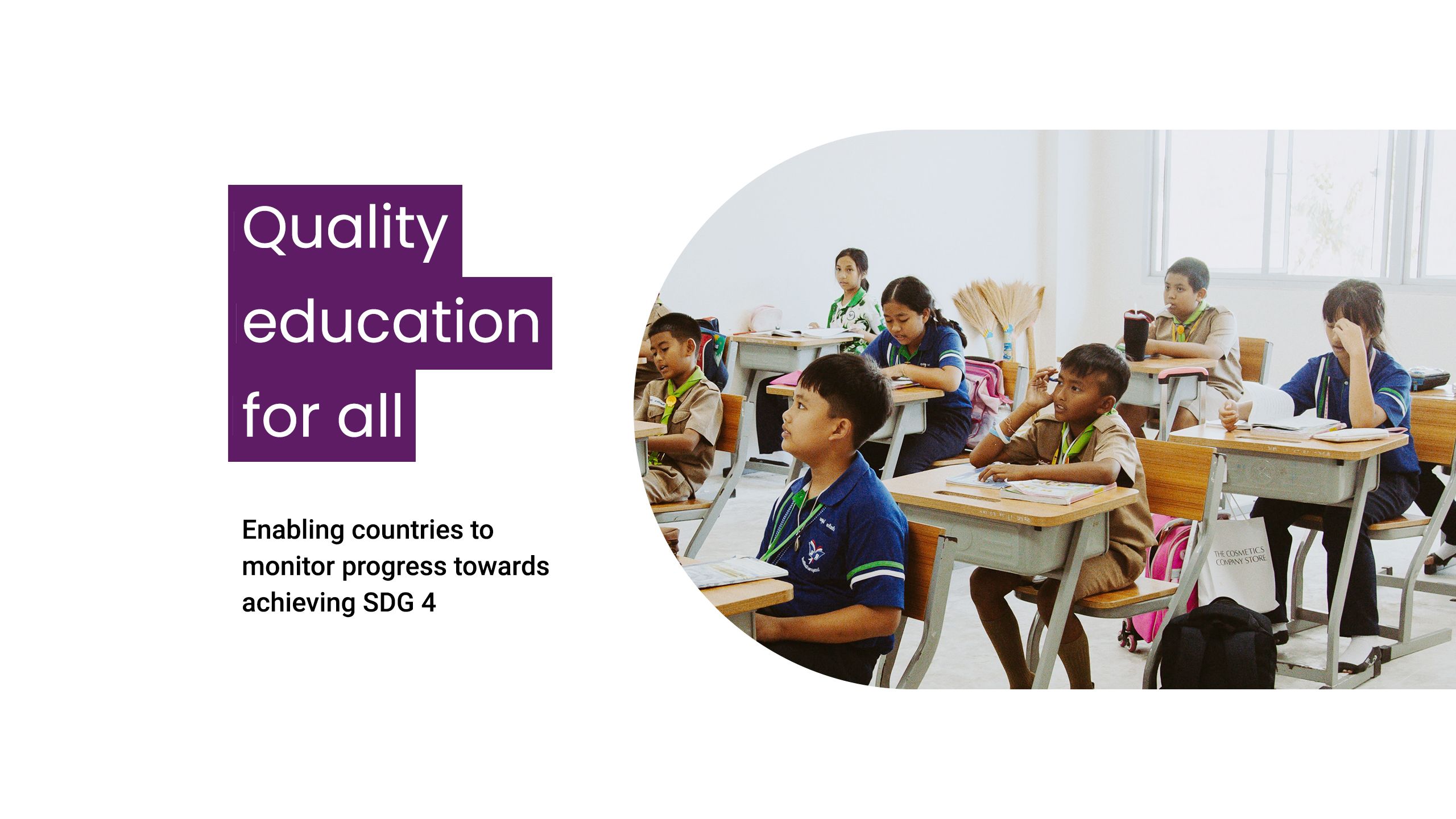
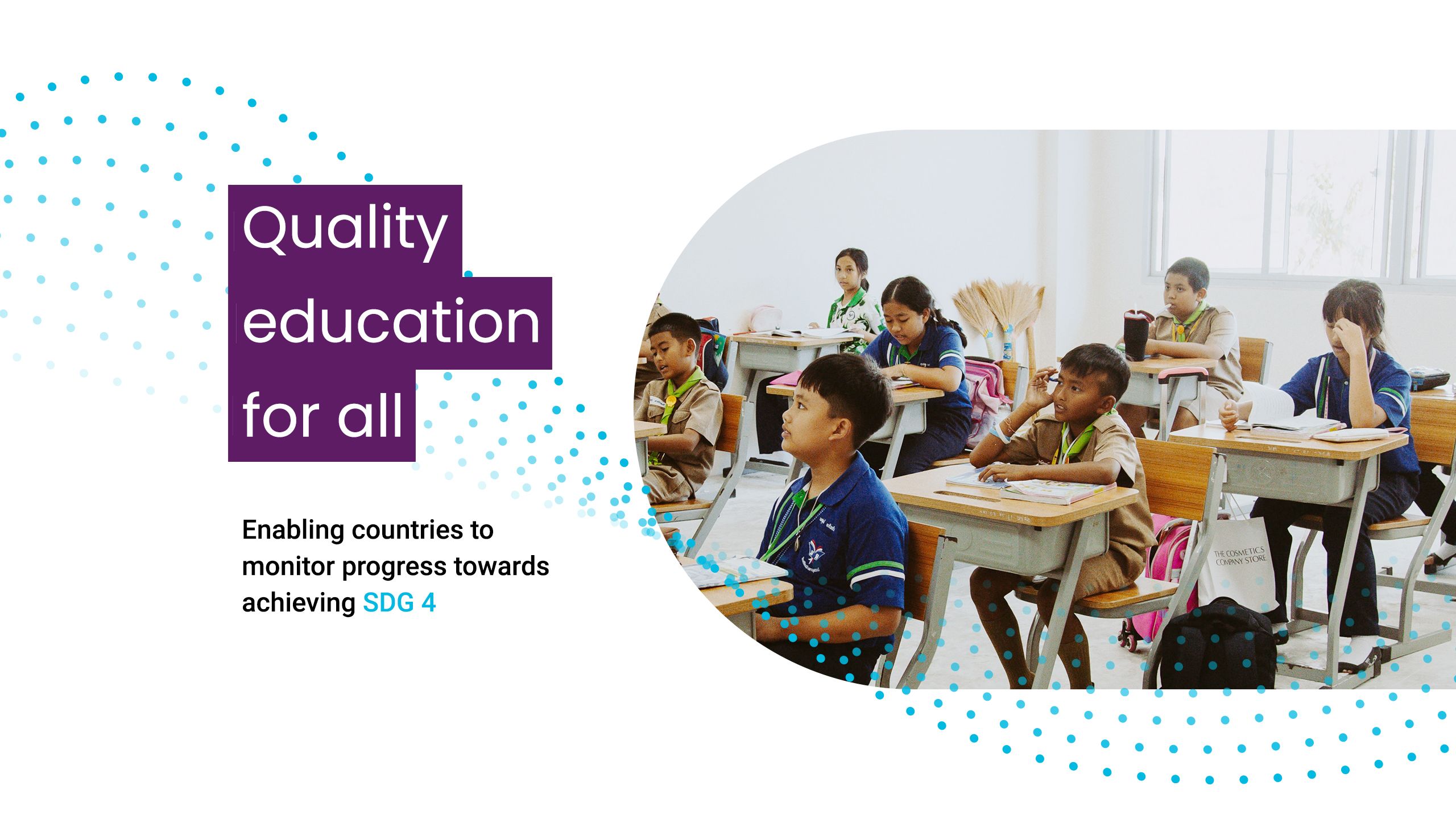
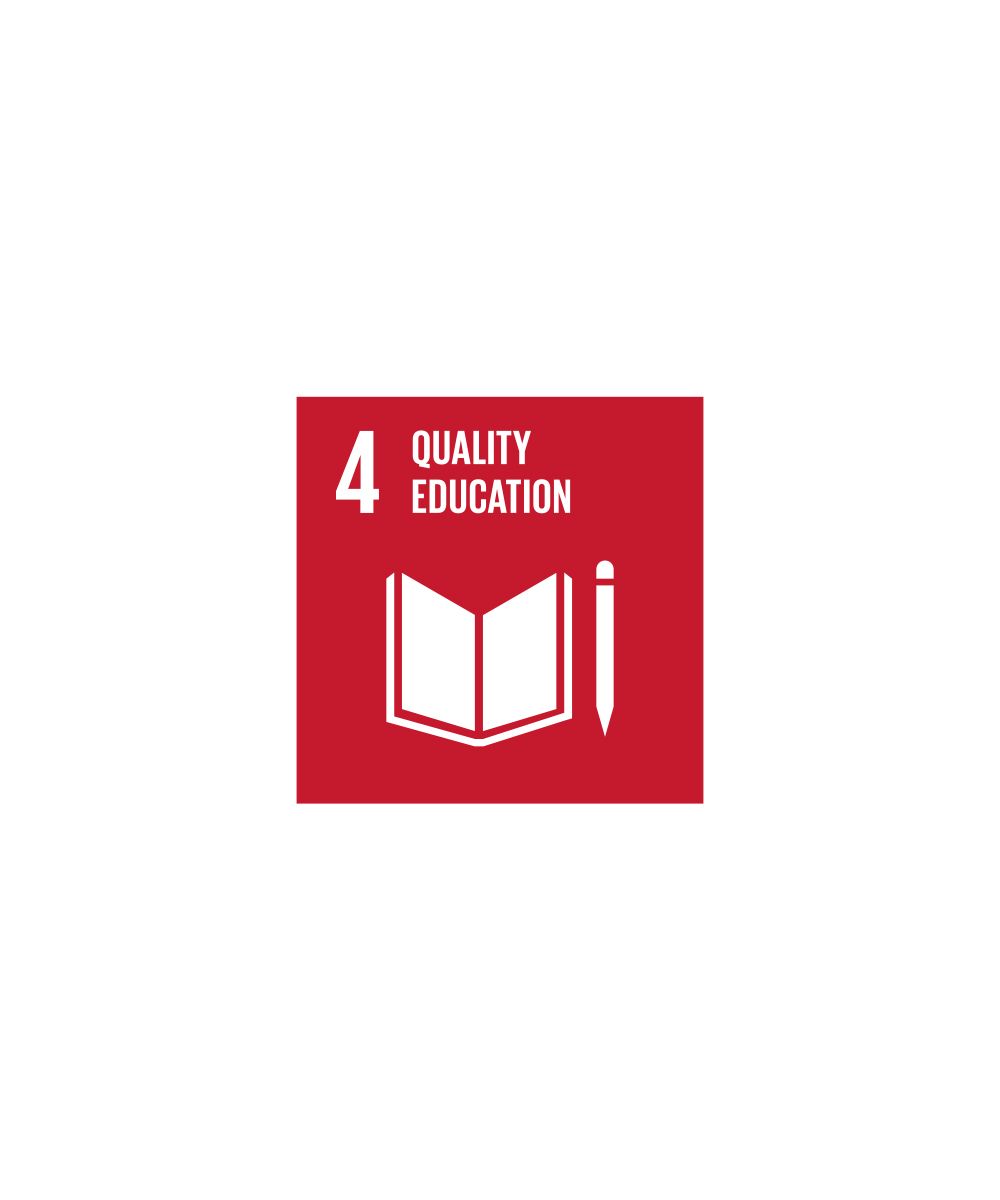
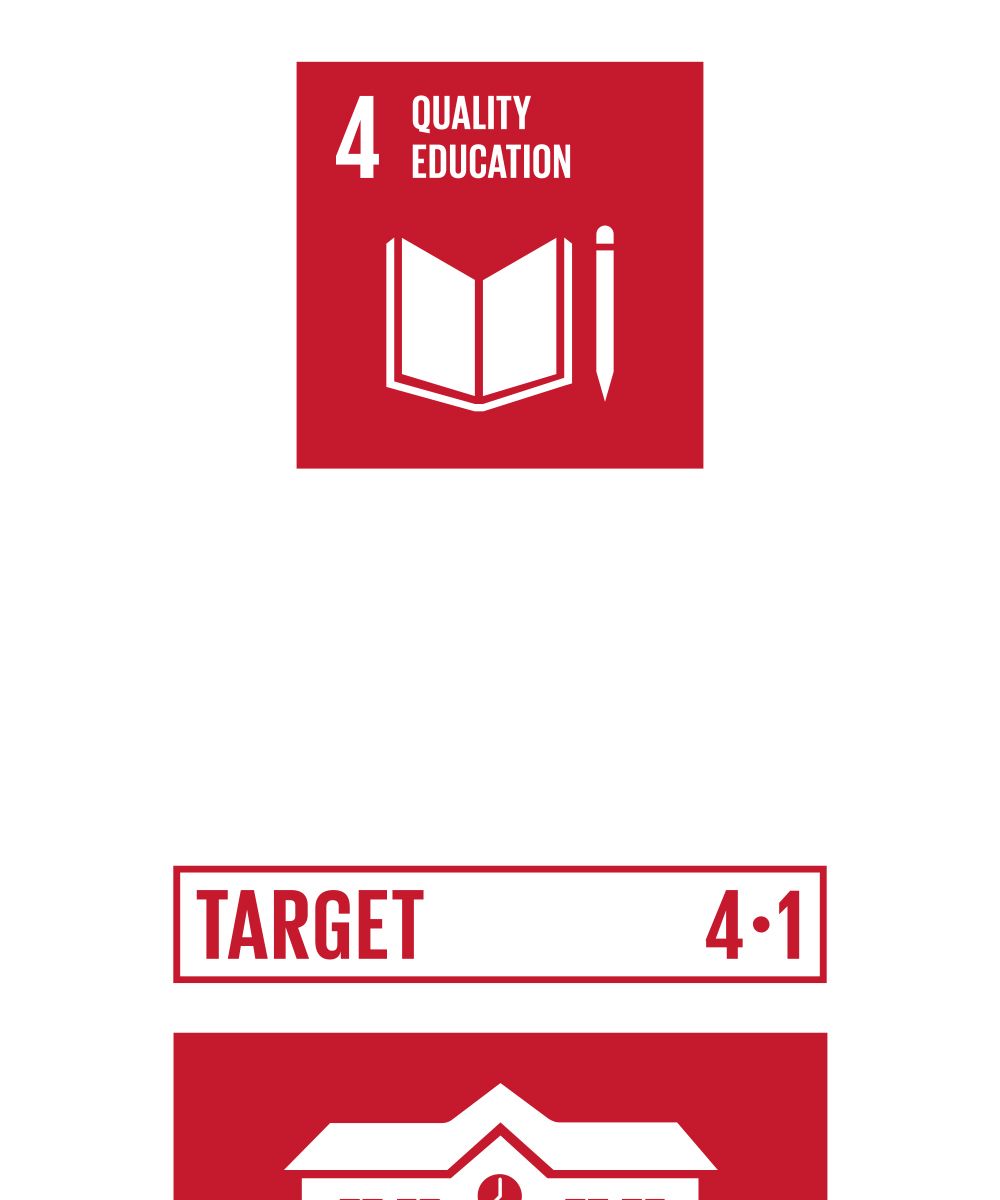
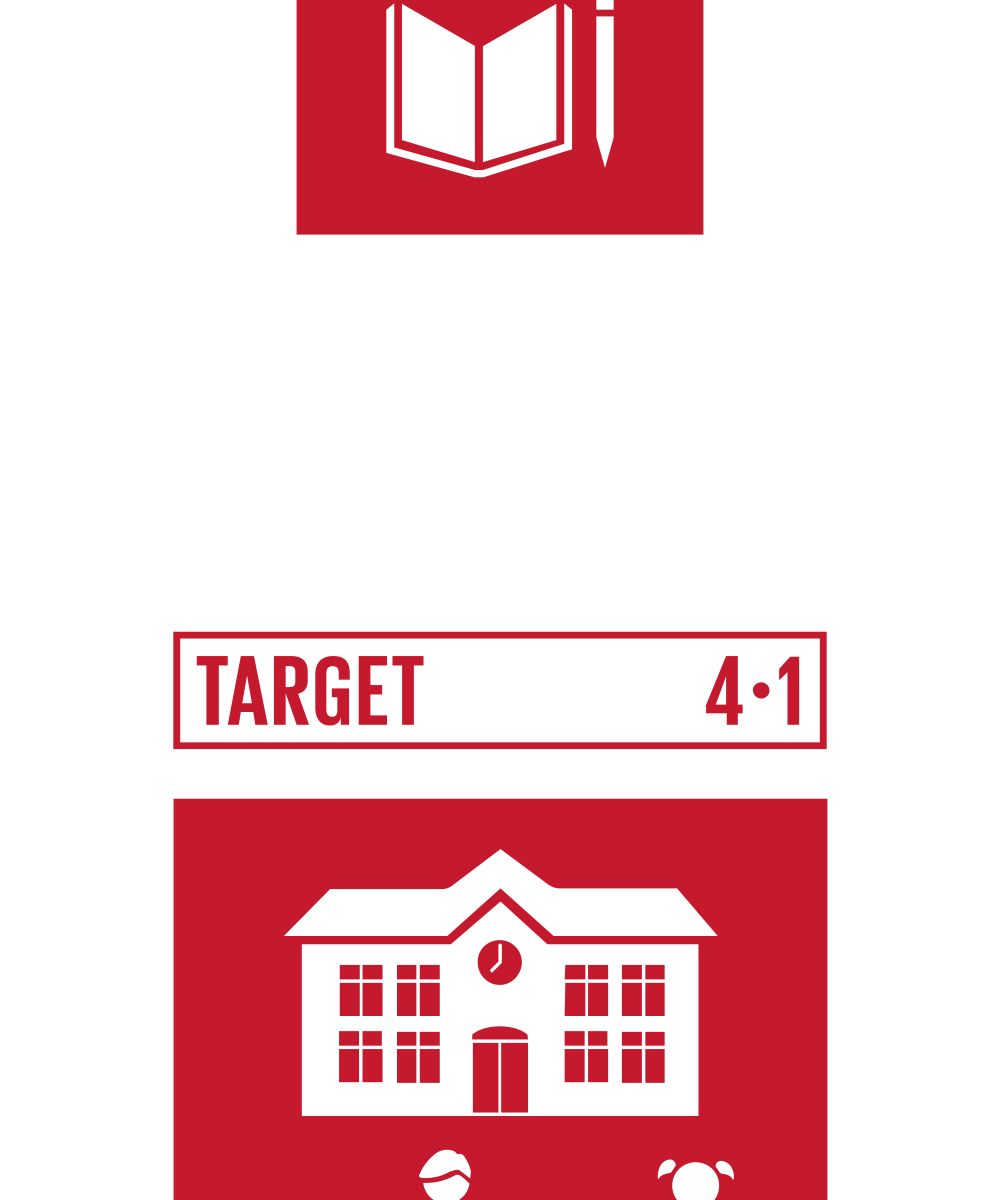
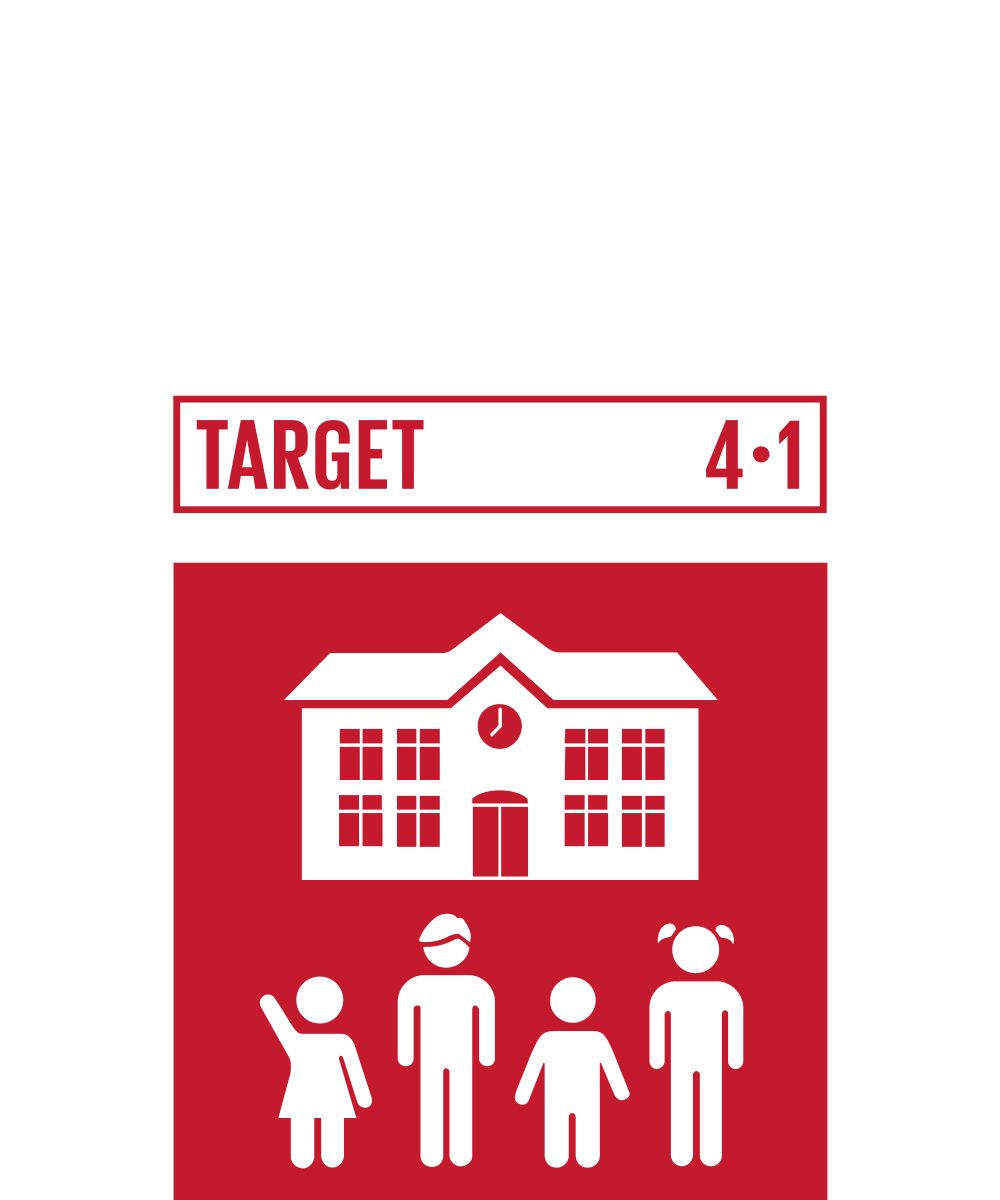
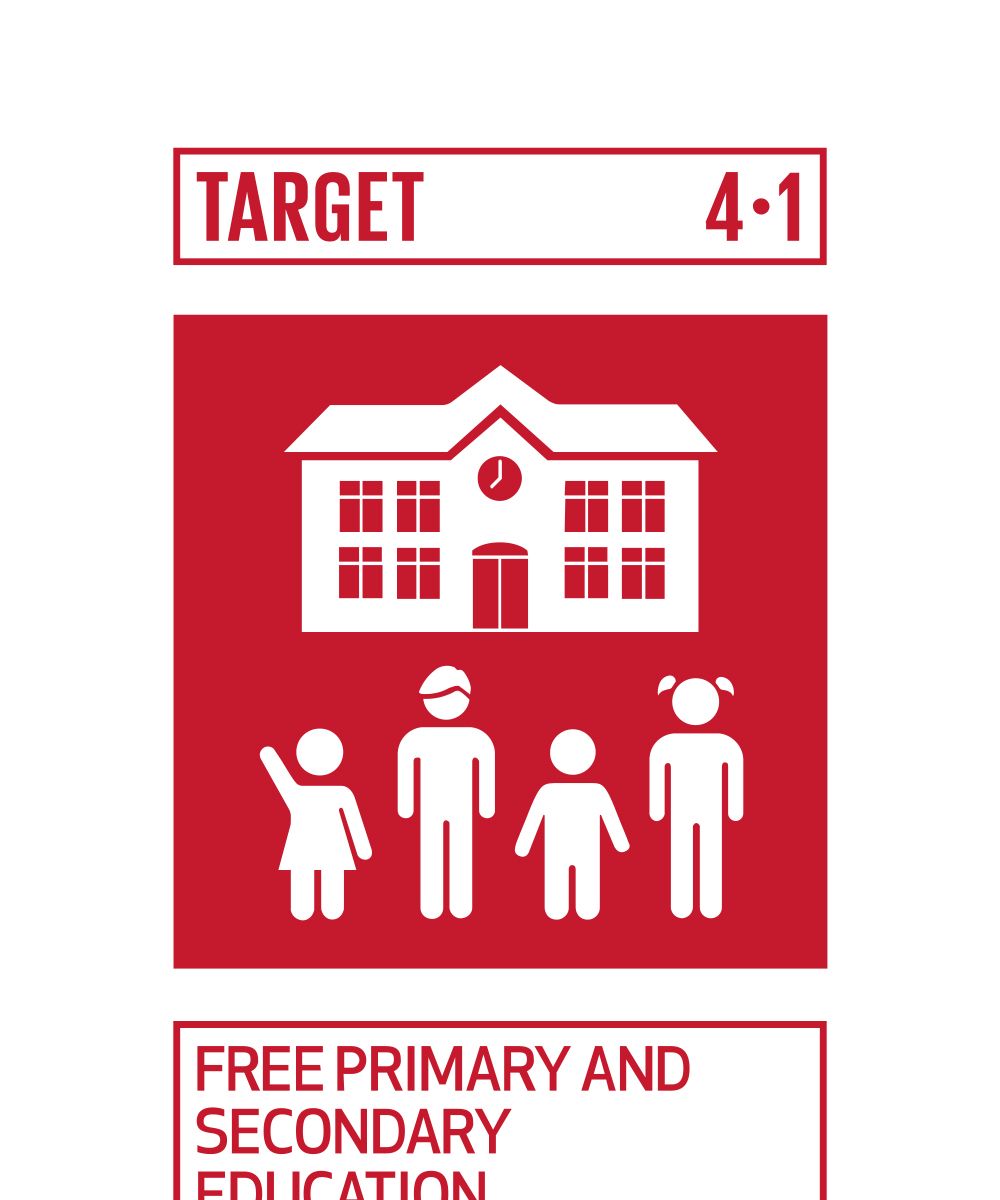
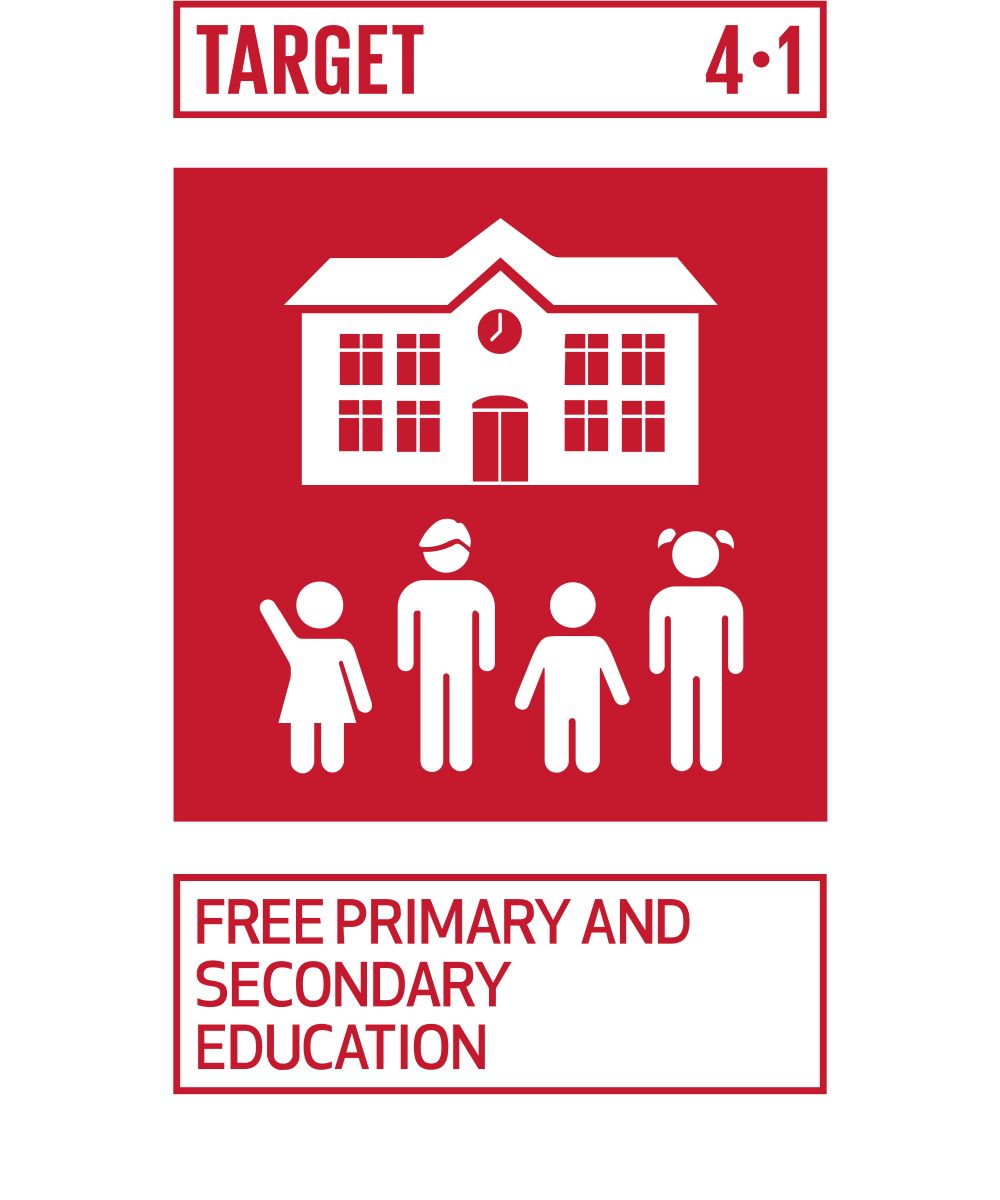
The story behind the
GEM Centre and SDG 4
Recognising that access to high quality education is central to creating global peace and prosperity, the 193 member states of the United Nations committed to the Education 2030 Sustainable Development Agenda in 2015. This agenda set out a path towards achieving United Nations Sustainable Development Goal (SDG) 4, inclusive and equitable quality education and lifelong learning for all by 2030.

Significant work has been undertaken by education stakeholders around the world to develop methods to support countries to monitor progress towards SDG 4. In fact, the Global Education Monitoring (GEM) Centre was established by the Australian Council for Educational Research (ACER) in 2013 to support the global monitoring of SDG 4. Over the past decade, in partnership with the Australian Government’s Department of Foreign Affairs and Trade (DFAT), the GEM Centre has had a significant and growing role in global efforts to achieve SDG 4.
As a technical partner of the UNESCO Institute for Statistics (UIS), the GEM Centre has developed ground-breaking methods and tools for countries around the world to use their own national or regional learning assessments to monitor and report progress towards achieving SDG 4. The UIS, which is mandated to monitor SDG 4, has officially endorsed the use of the GEM Centre’s methods.

Describing learning progression
Describing what it typically looks like for learners to move from early to more advanced knowledge, skills and understanding is critical to monitoring learning. Based on evidence from a wide variety of international, regional and national assessments – in combination with common theories of learning and development – ACER has created learning progression scales in reading and mathematics. These empirical scales describe levels of learning in reading and mathematics that range from what students can be expected to attain and demonstrate in the early years of school to upper secondary school.
Understanding learning as progress is fundamental to ACER’s approach to assessment. The learning progression scales are used to describe knowledge and skills at different levels of proficiency.

This information is crucial to understand what students know and can do, and what they need to do to progress.
The learning progression scales are also central to the GEM Centre’s tools and methods developed for countries to monitor student learning progress and can be used for SDG 4 reporting. ACER’s Learning Progression Explorer is an online tool that allows users to study and explore these learning progressions in reading and mathematics.

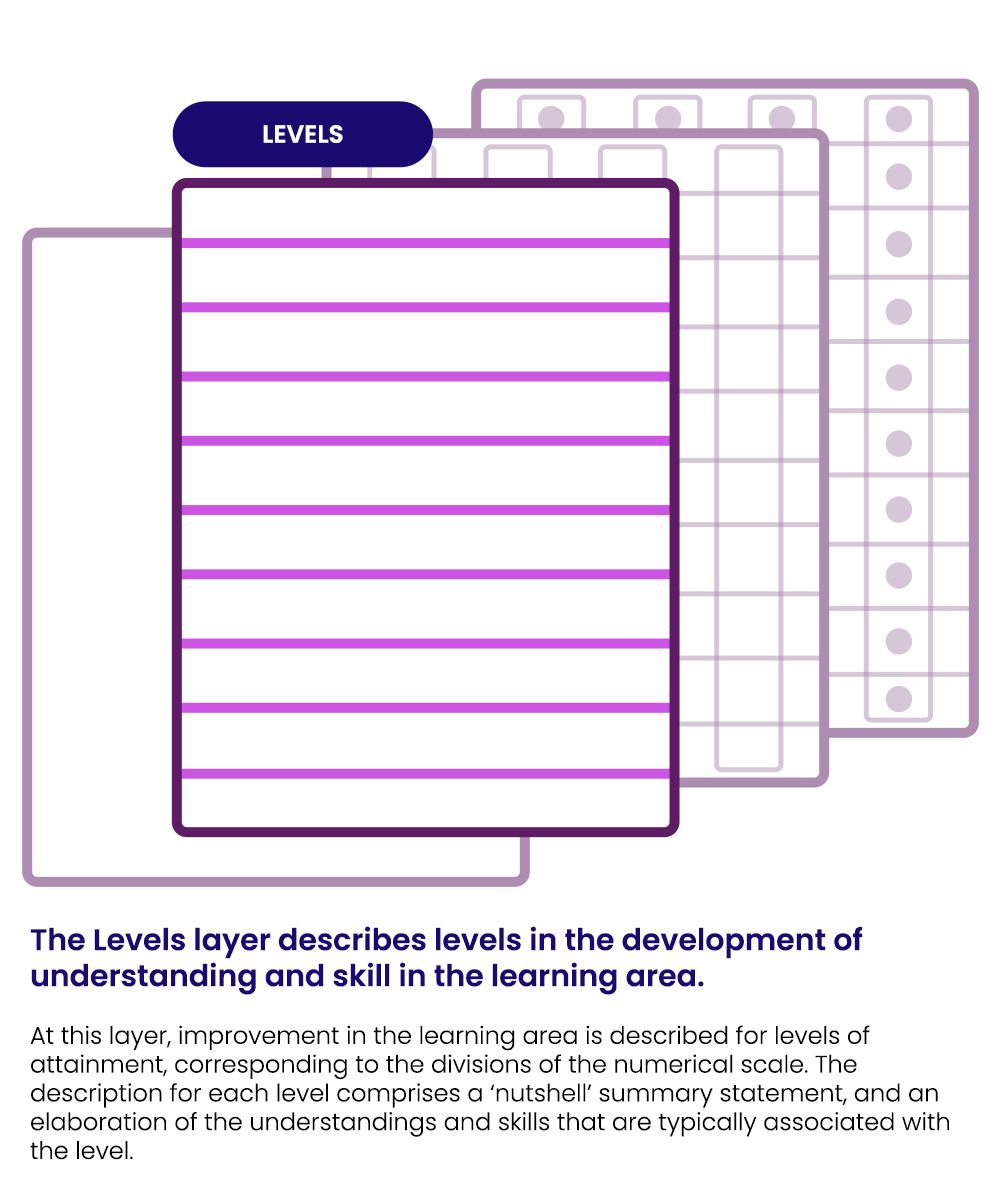

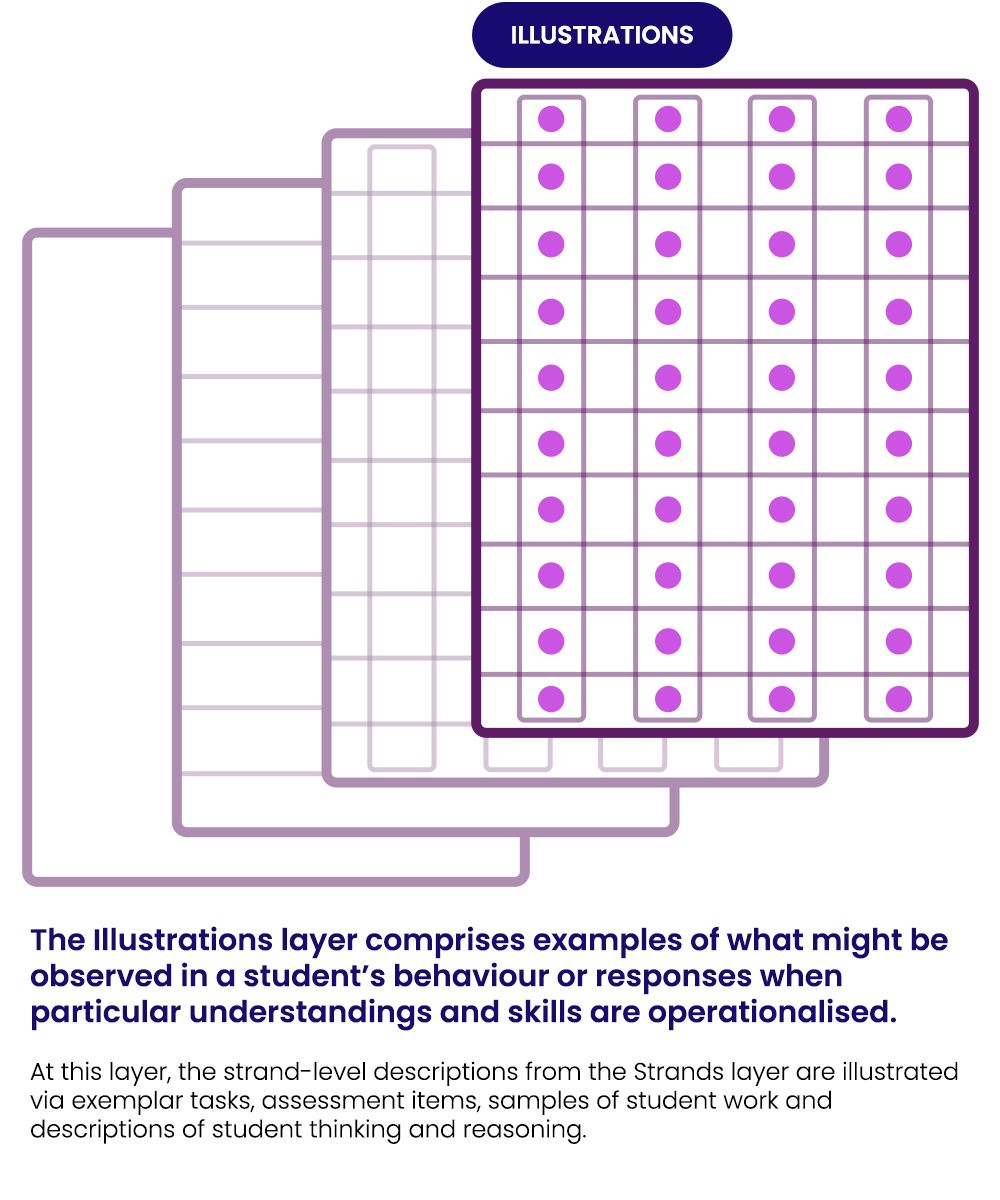
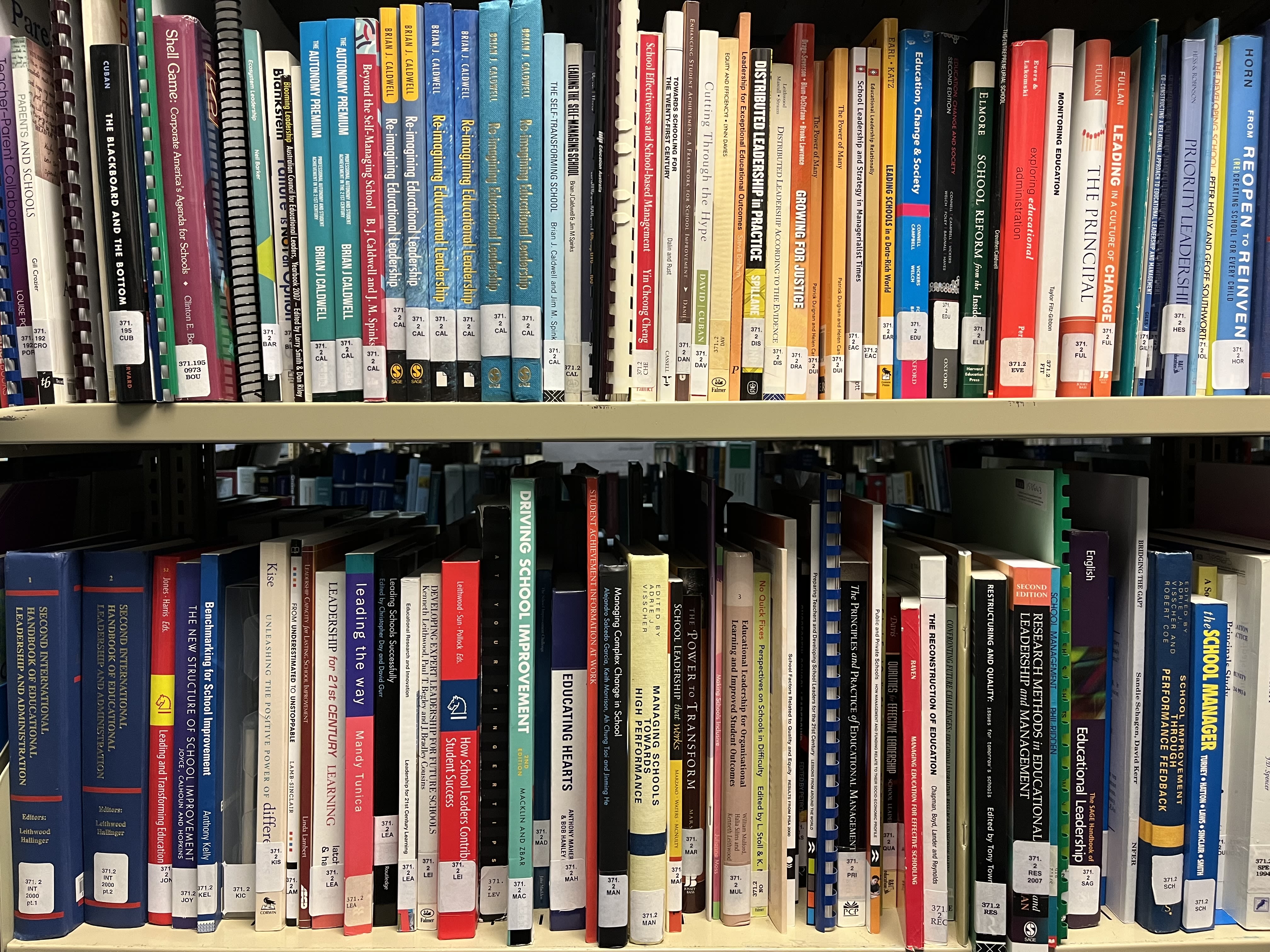
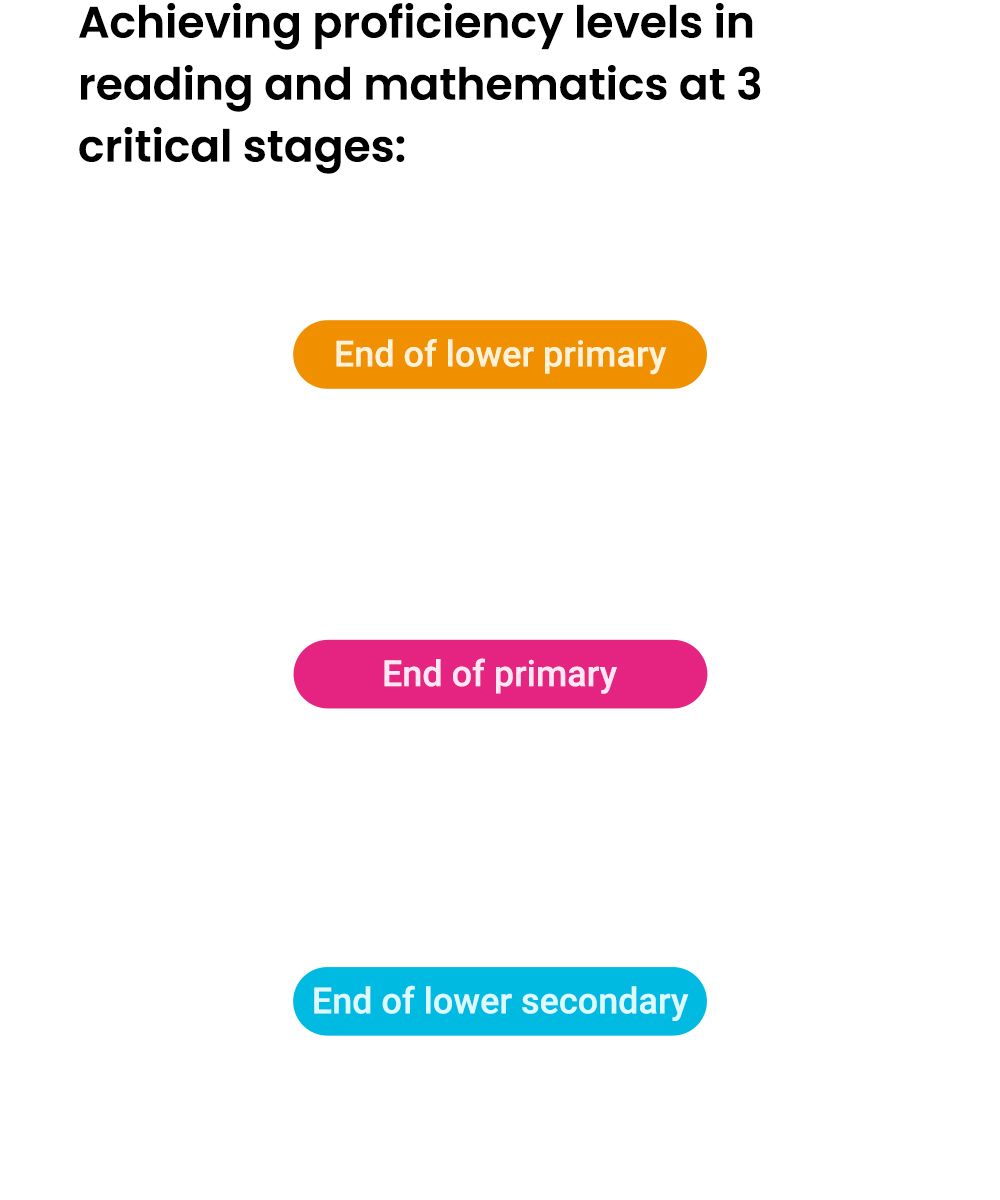
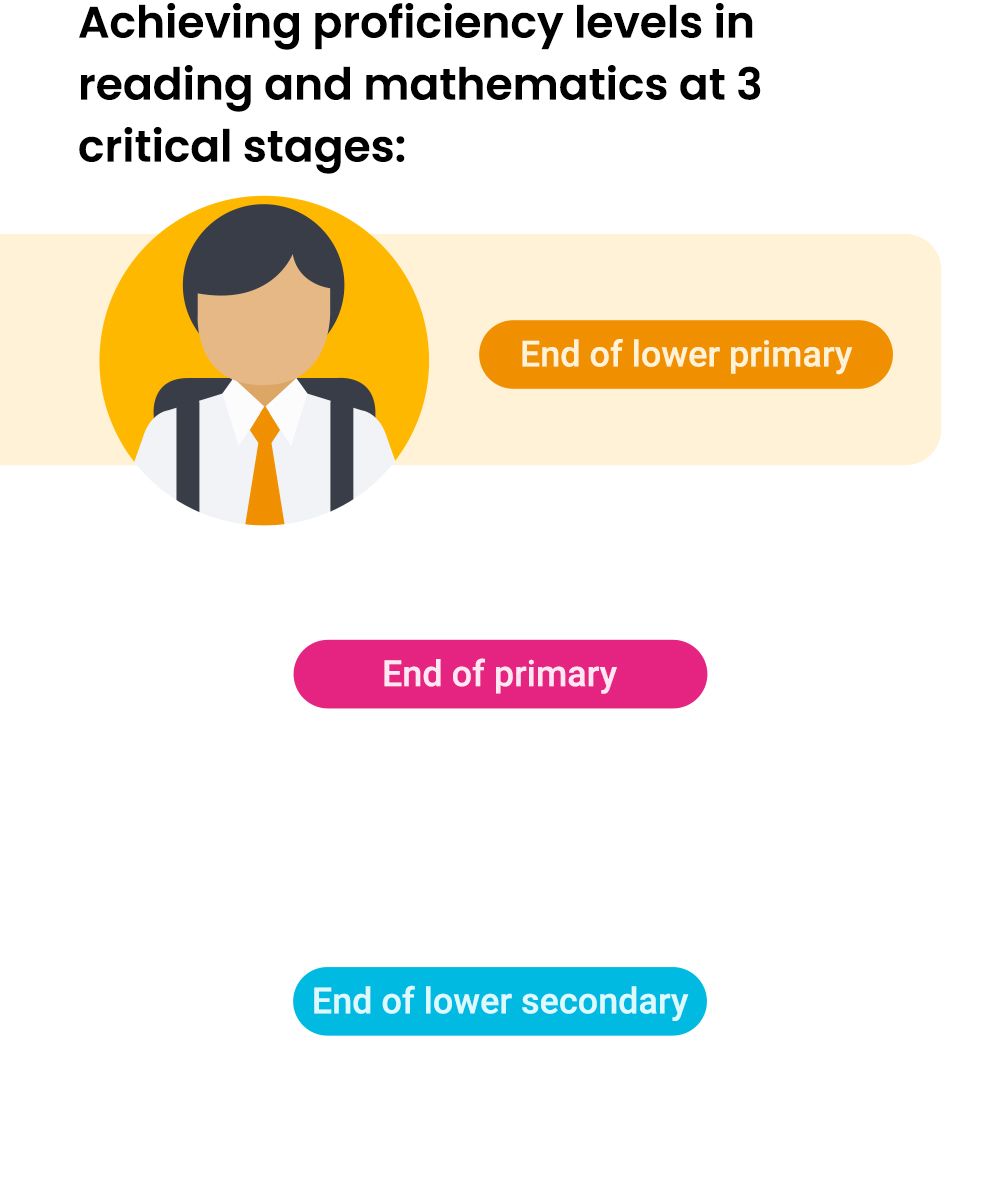
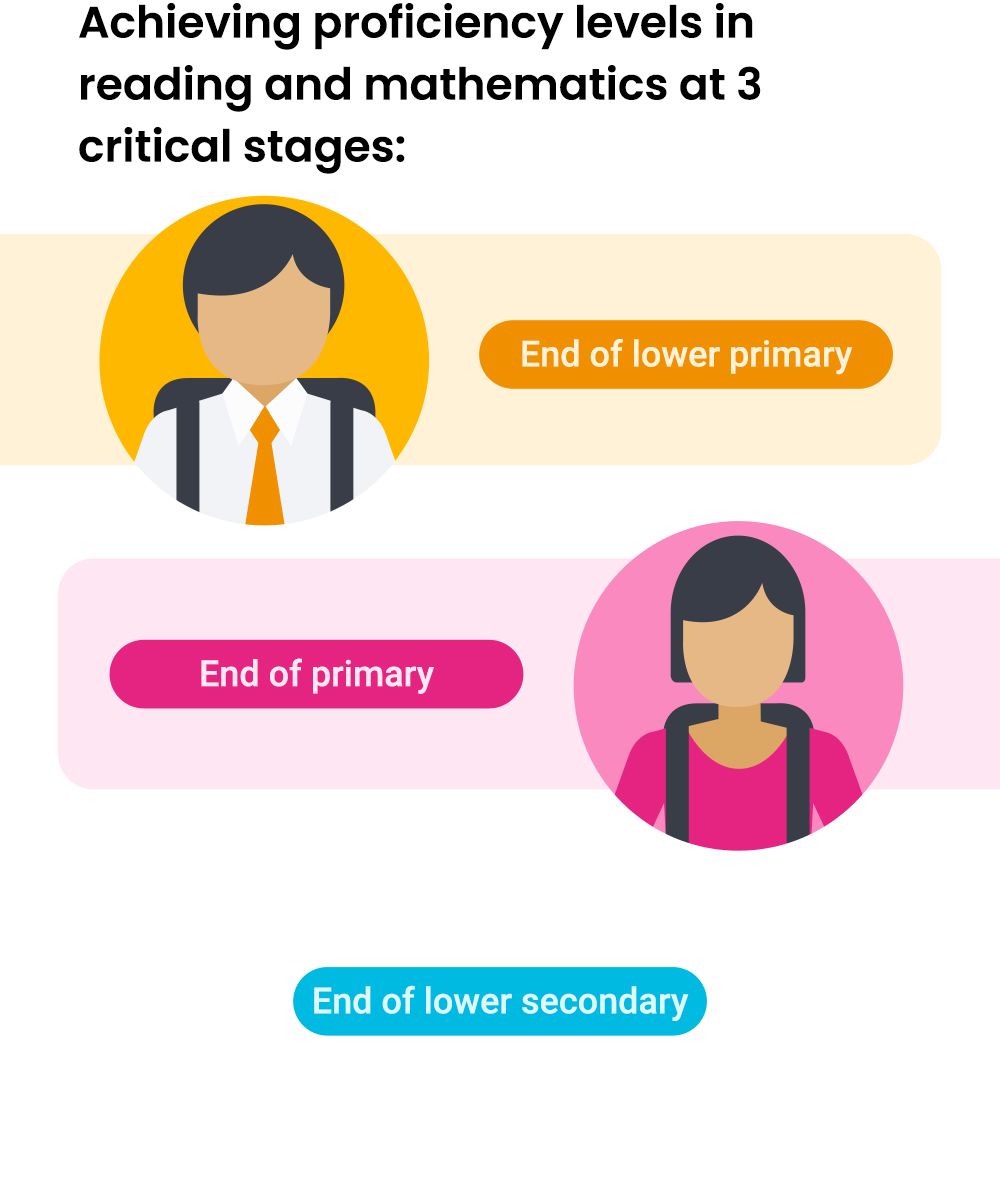
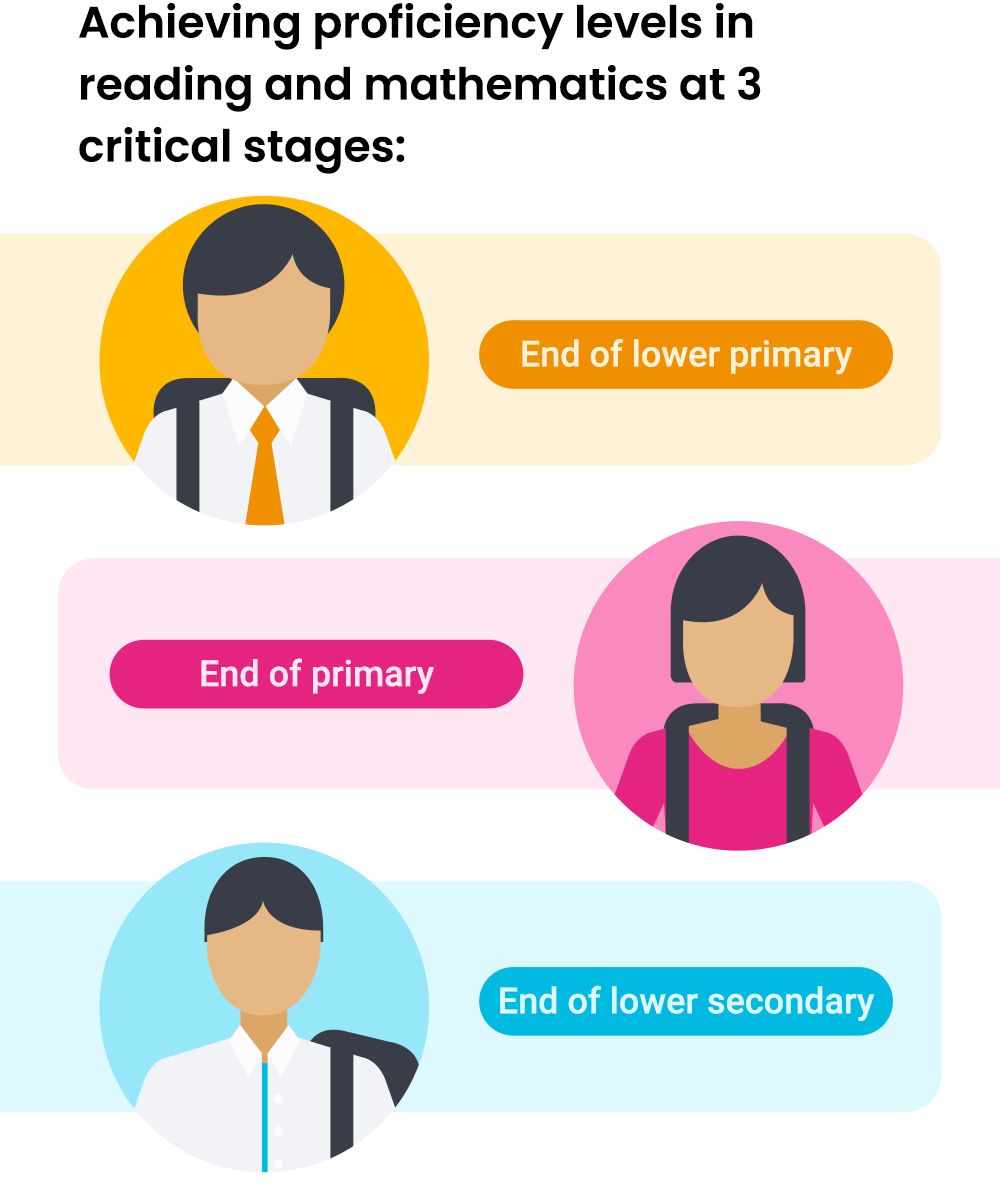
Monitoring learning through a global framework
The primary indicator of SDG 4 (SDG 4.1.1), requires information about the proportion of girls and boys achieving at least a minimum proficiency level in reading and mathematics at 3 stages of schooling – the end of lower primary, primary and lower secondary. There has been considerable international effort – led by the UIS and supported by the Global Alliance to Monitor Learning (GAML) – to reach a shared understanding of the knowledge and skills learners must be able to demonstrate at these minimum levels.

As a member of GAML, and in collaboration with other international organisations and experts, ACER has contributed to the development of the Global Proficiency Framework. This framework defines the minimum proficiency levels (MPLs) in reading and mathematics that learners are expected to obtain at the end of lower primary, end of primary and end of lower secondary.
The MPLs provide important objective benchmarks for countries to measure their progress towards achieving the global education targets. ACER assessment experts have substantively refined the global MPLs to better illustrate the knowledge and skills required at each level. This provides education policymakers and practitioners with the information needed to better target student learning needs.
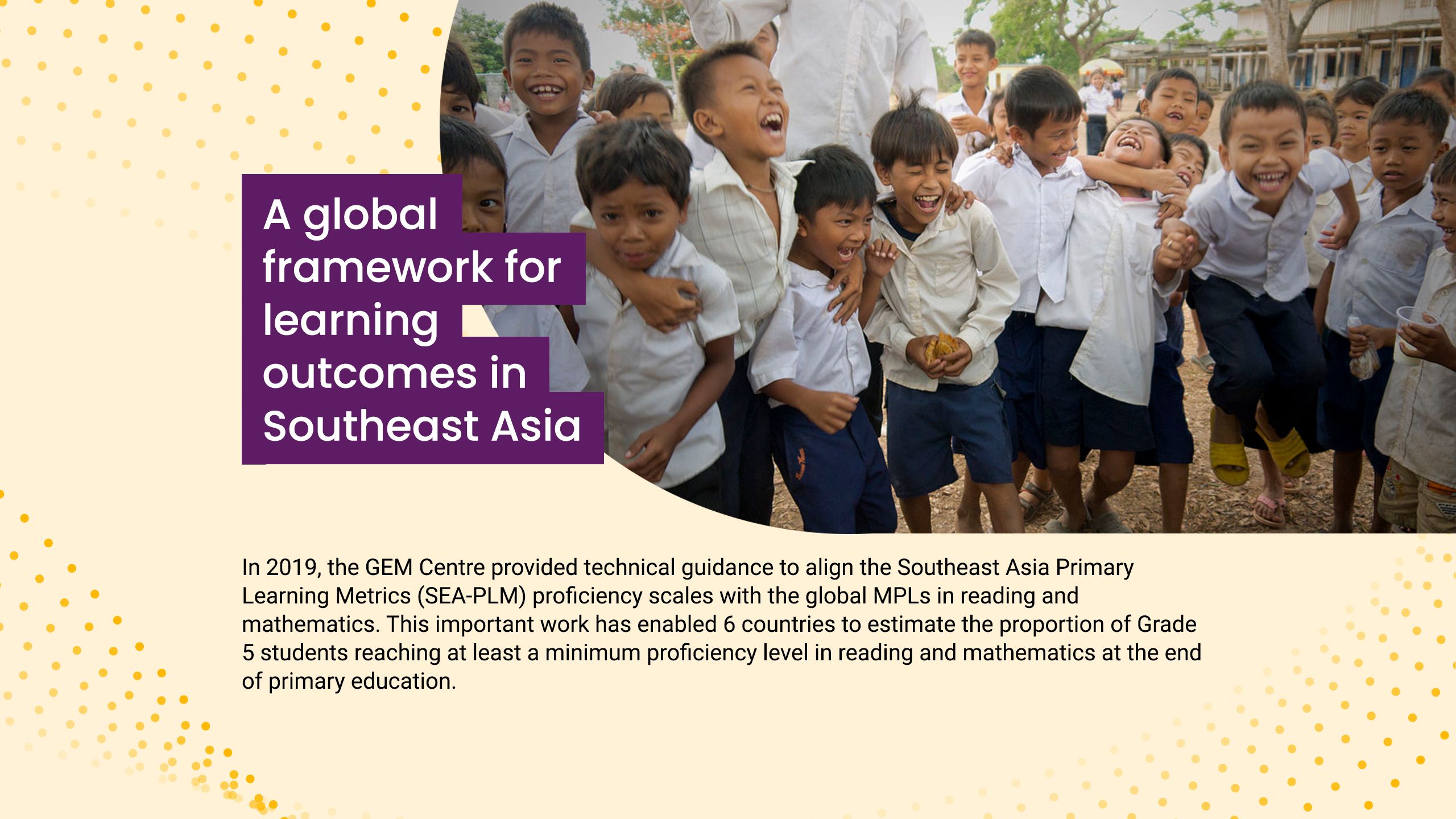
Methods and tools
As a technical partner of the UIS, the GEM Centre has been developing, testing and refining tools and methods for countries to monitor student learning progress for the past decade. These resources can be used to report progress towards SDG 4, focusing on indicator 4.1.1. The tools and methods also provide policymakers with an understanding of student learning levels and gaps. This evidence is crucial for developing strategies to improve learning for all.
Some useful tools and methods that assist countries to monitor learning outcomes are highlighted below.
Assessments for Minimum Proficiency Levels
Using existing national and regional assessments to measure student learning progress is important. This is especially true in low- and middle-income countries, where resources for additional monitoring may be scarce.
The Assessments for Minimum Proficiency Levels (AMPL) were developed by ACER in partnership with the UIS for use as a stand-alone assessment or for integration into existing learning assessments. The AMPL tools are specifically designed to measure the proportion of children and young people reaching the global MPLs in reading and mathematics – as the primary indicator of SDG 4.
AMPL test items were selected from the UIS Global Item Bank, which consists of items from a range of sources, including 300 mathematics and 300 reading items provided by the GEM Centre.
To support national assessment teams in implementing AMPL, the toolkit also provides manuals for its administration and data management. A set of technical standards ensure consistency in the rigorous implementation of AMPL internationally.
Implementing AMPL is also a capacity development opportunity for countries to monitor learning. National assessment teams are supported to develop, implement and use data from large-scale learning assessments to make meaningful interpretations about student learning outcomes that are locally relevant, and can be used to report progress towards achieving SDG 4.
Learn more about AMPL.
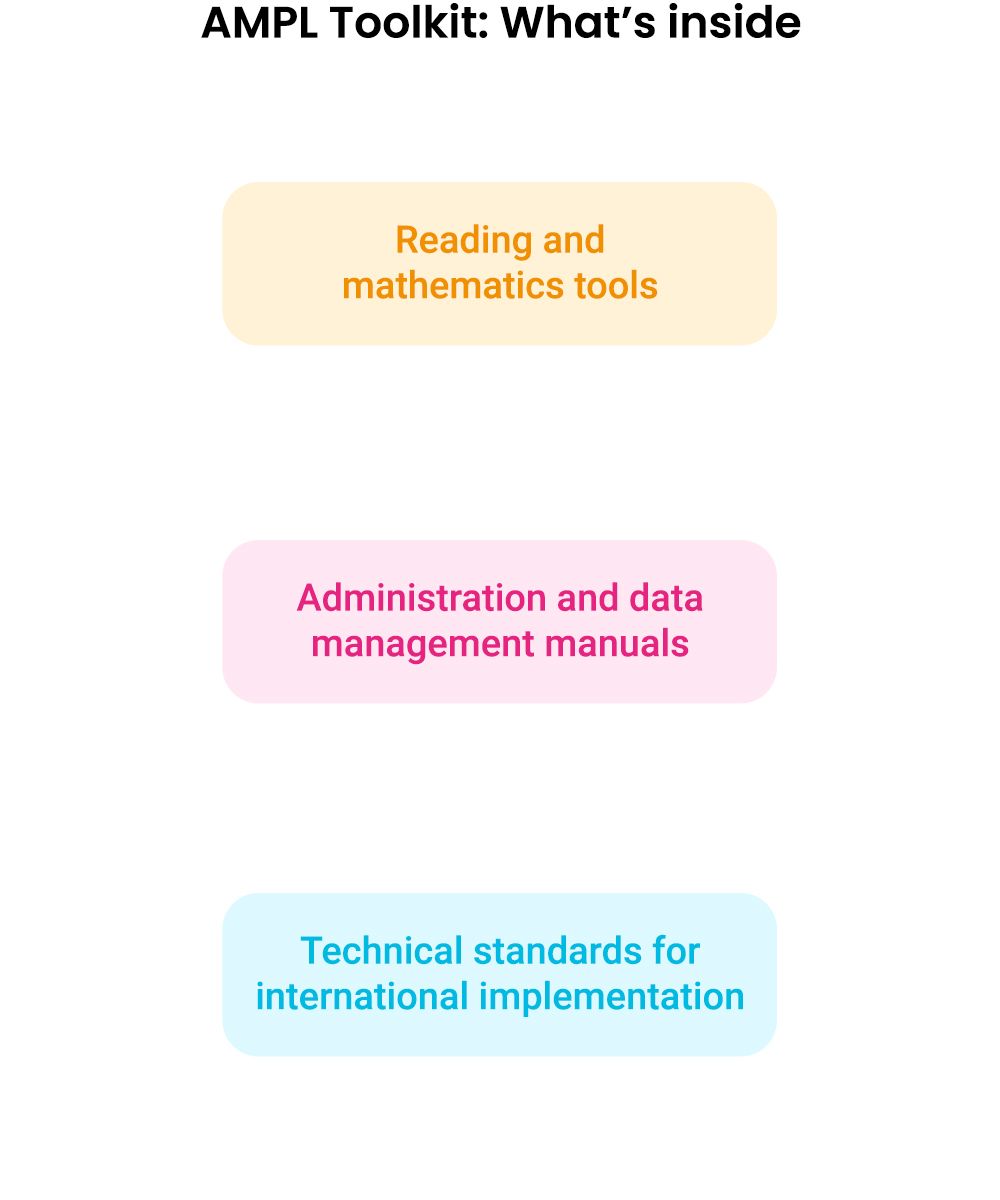

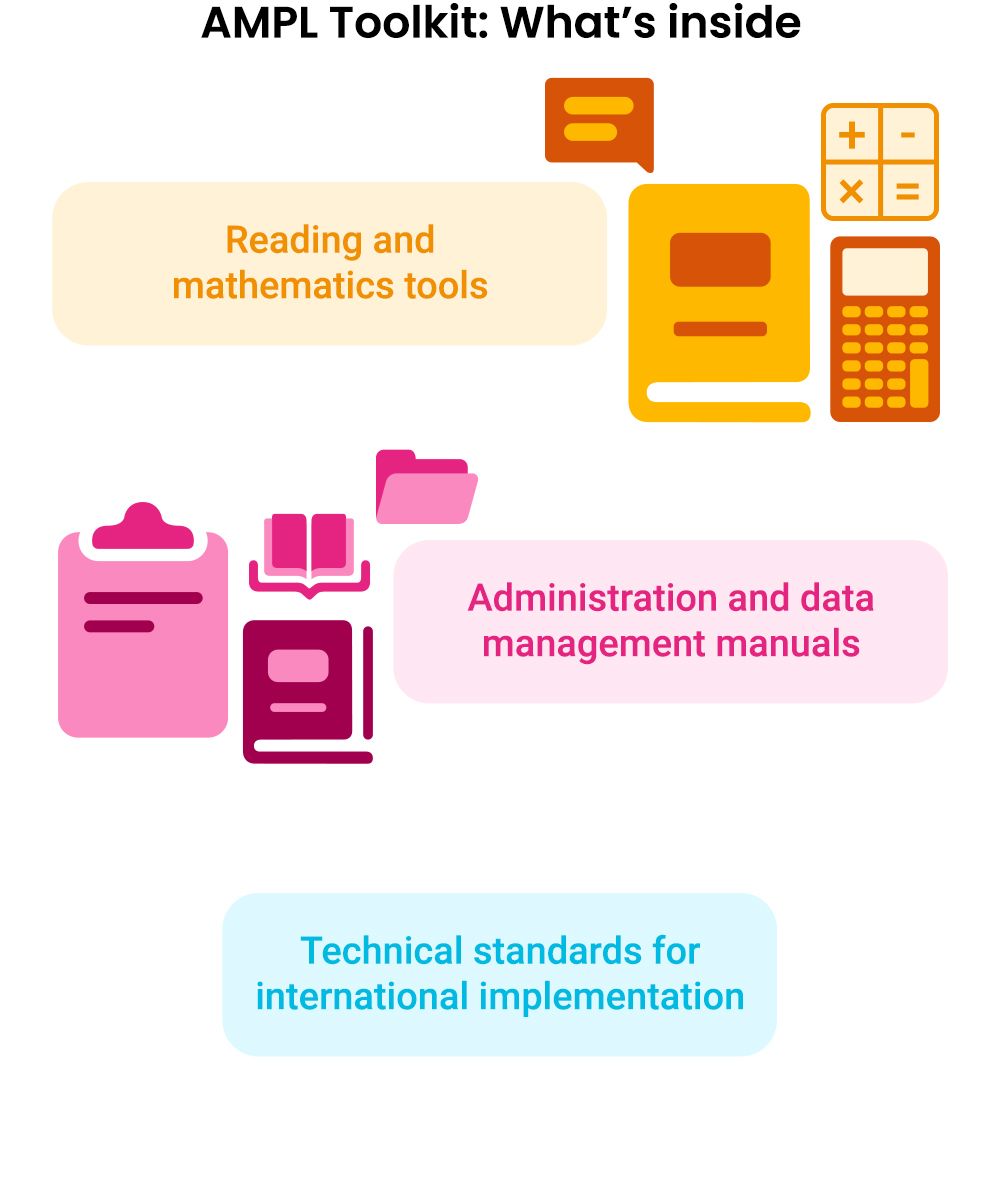
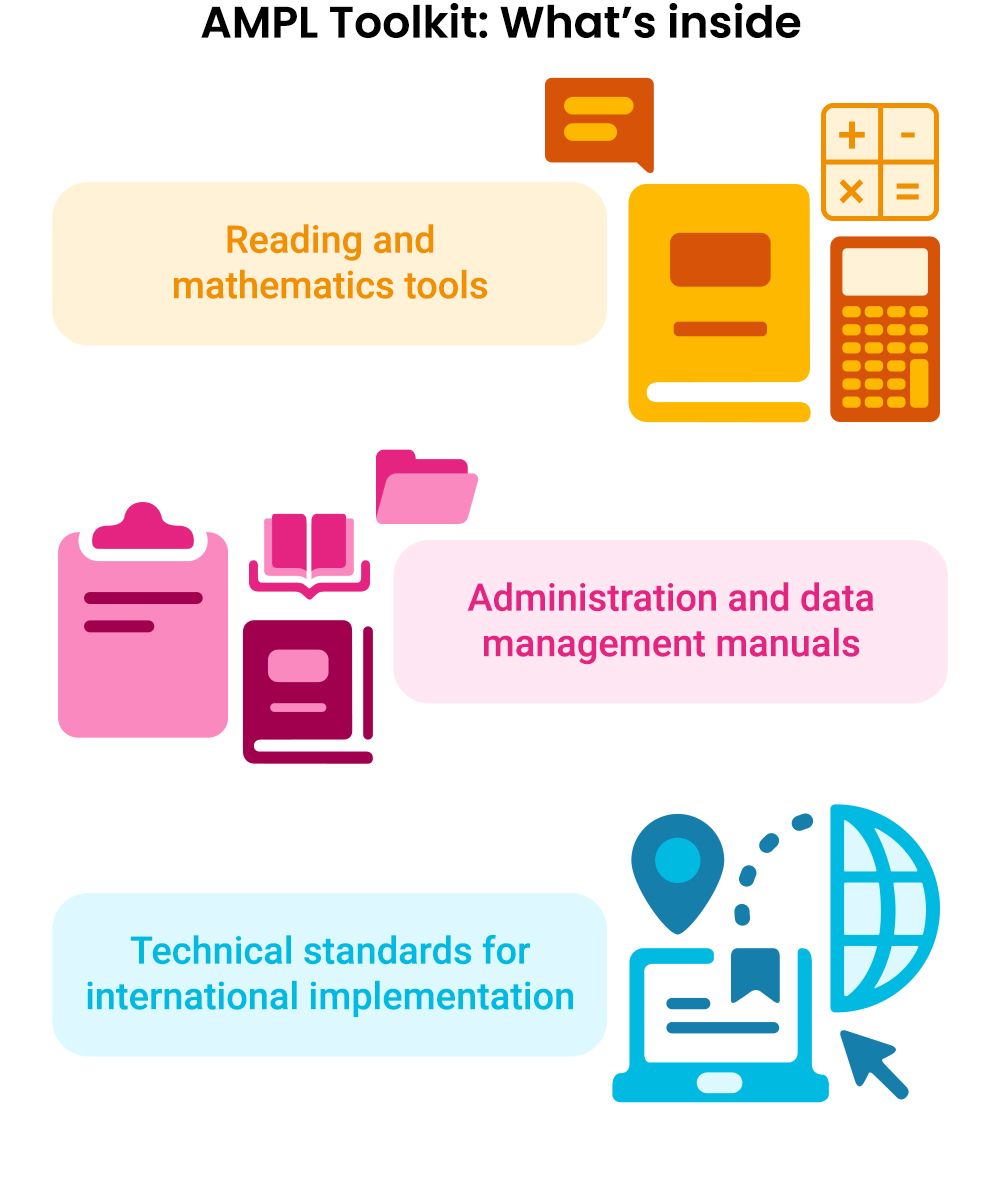
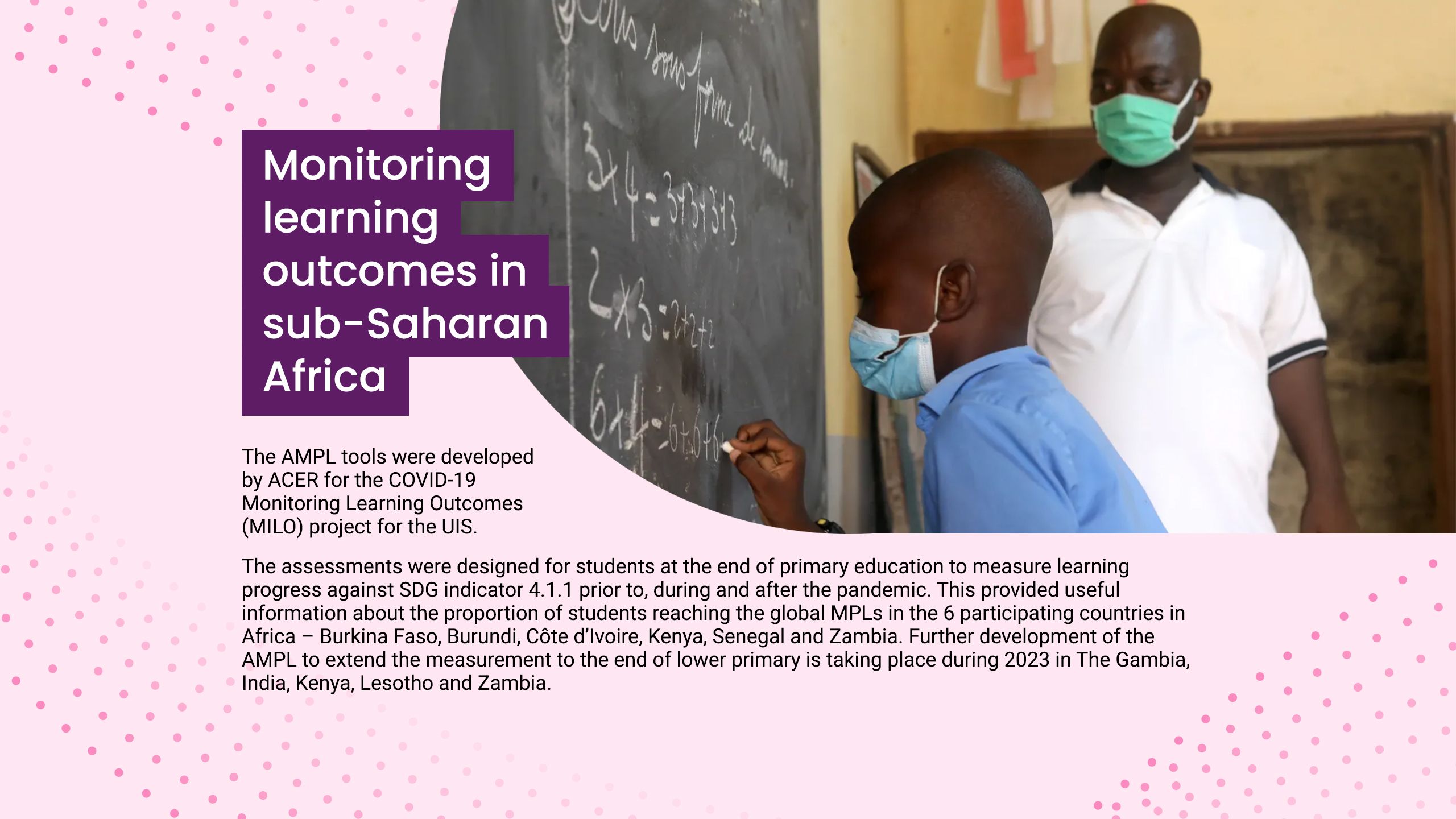
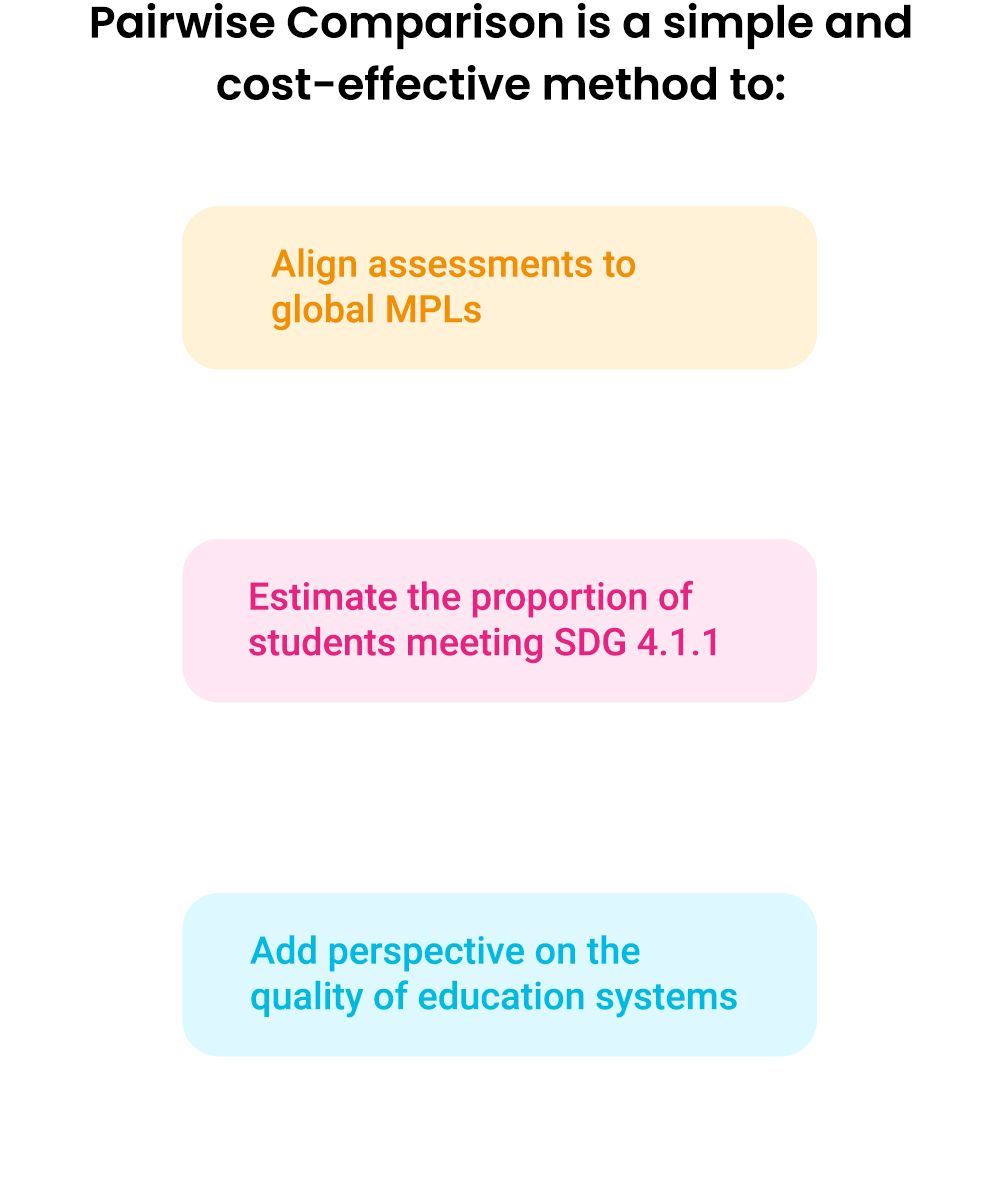
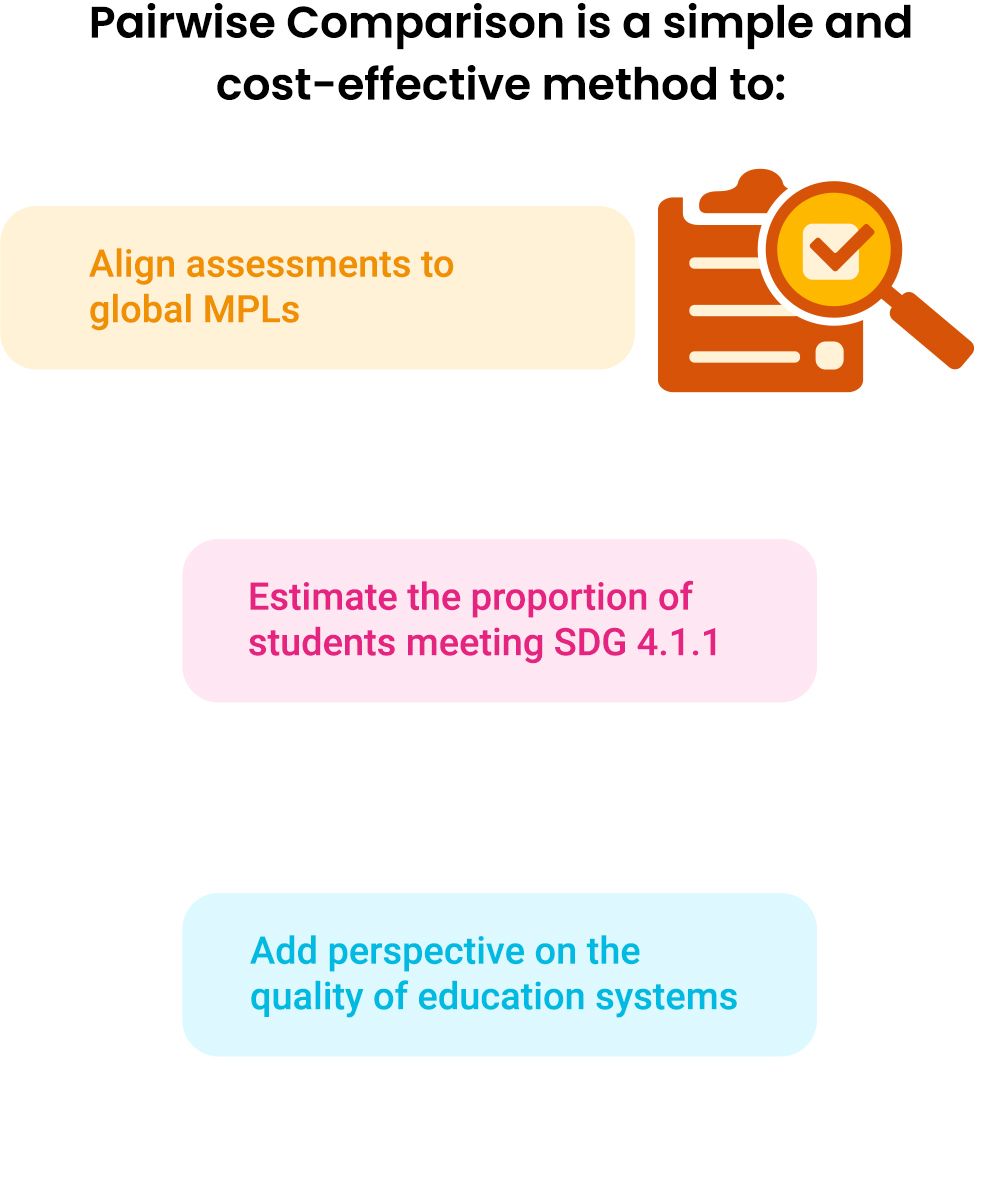
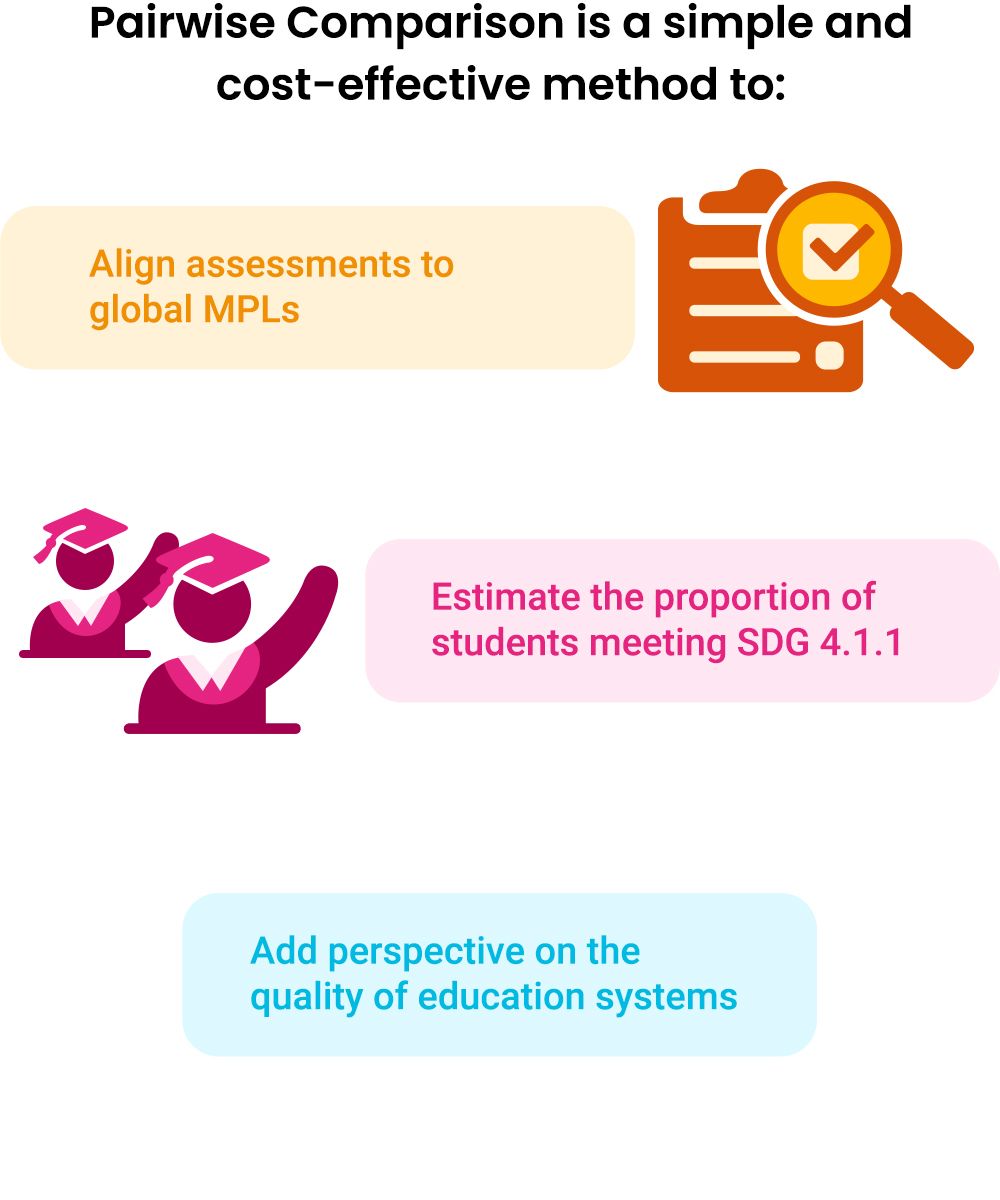
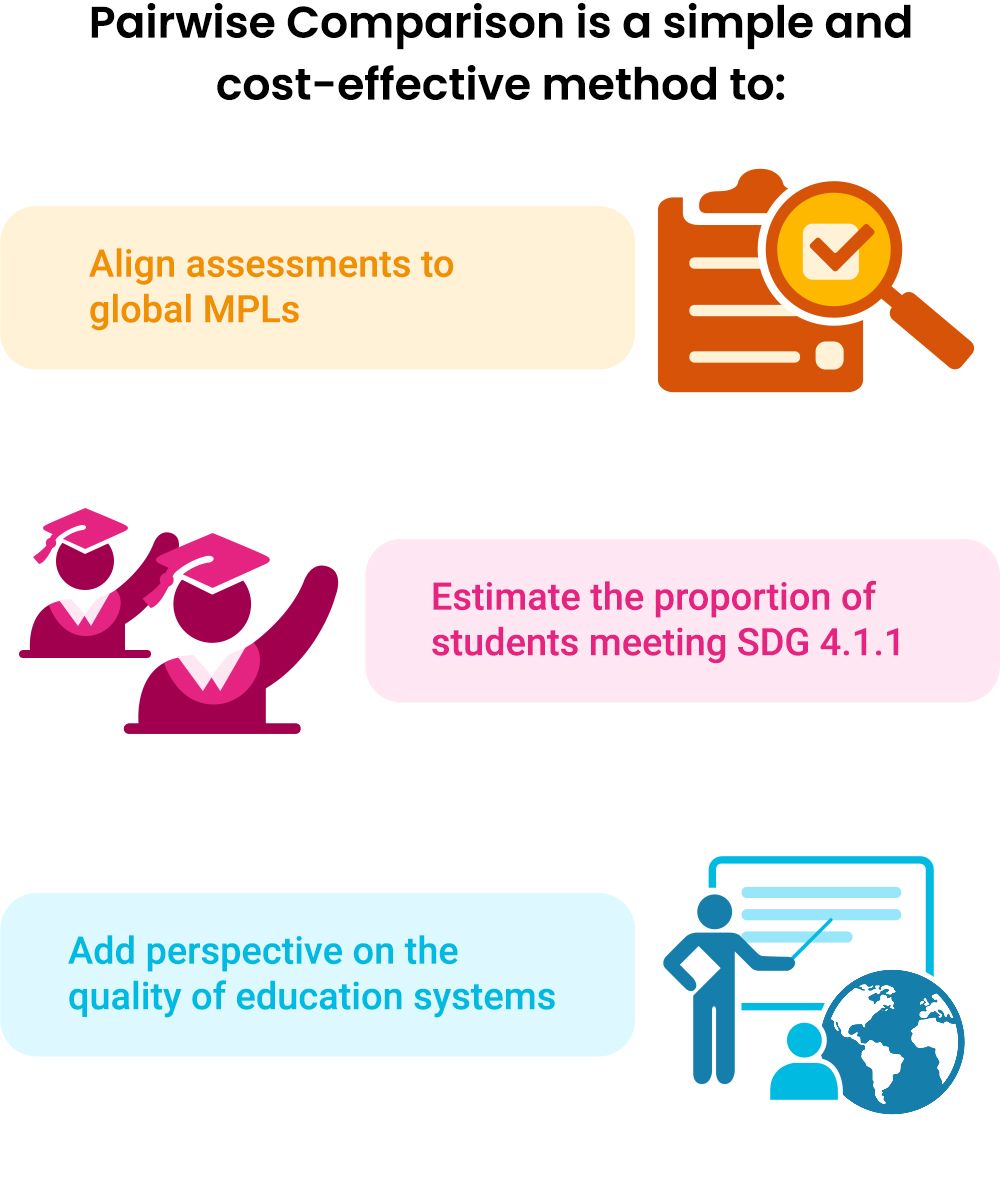
Methods and tools
Pairwise Comparison Method Toolkit
The Pairwise Comparison Method Toolkit describes how countries can estimate the proportion of students meeting SDG indicator 4.1.1. Developed by ACER and the UIS, pairwise comparison is an empirical method that combines expert judgement with statistical linking using Item Response Theory, to locate the global MPL benchmarks on a national or regional learning assessment scale.
The Pairwise Comparison Method is relatively simple to implement and provides a cost- and time-effective way to align an assessment to the global MPLs. By using this method, countries also gain valuable additional psychometric information about their assessments.
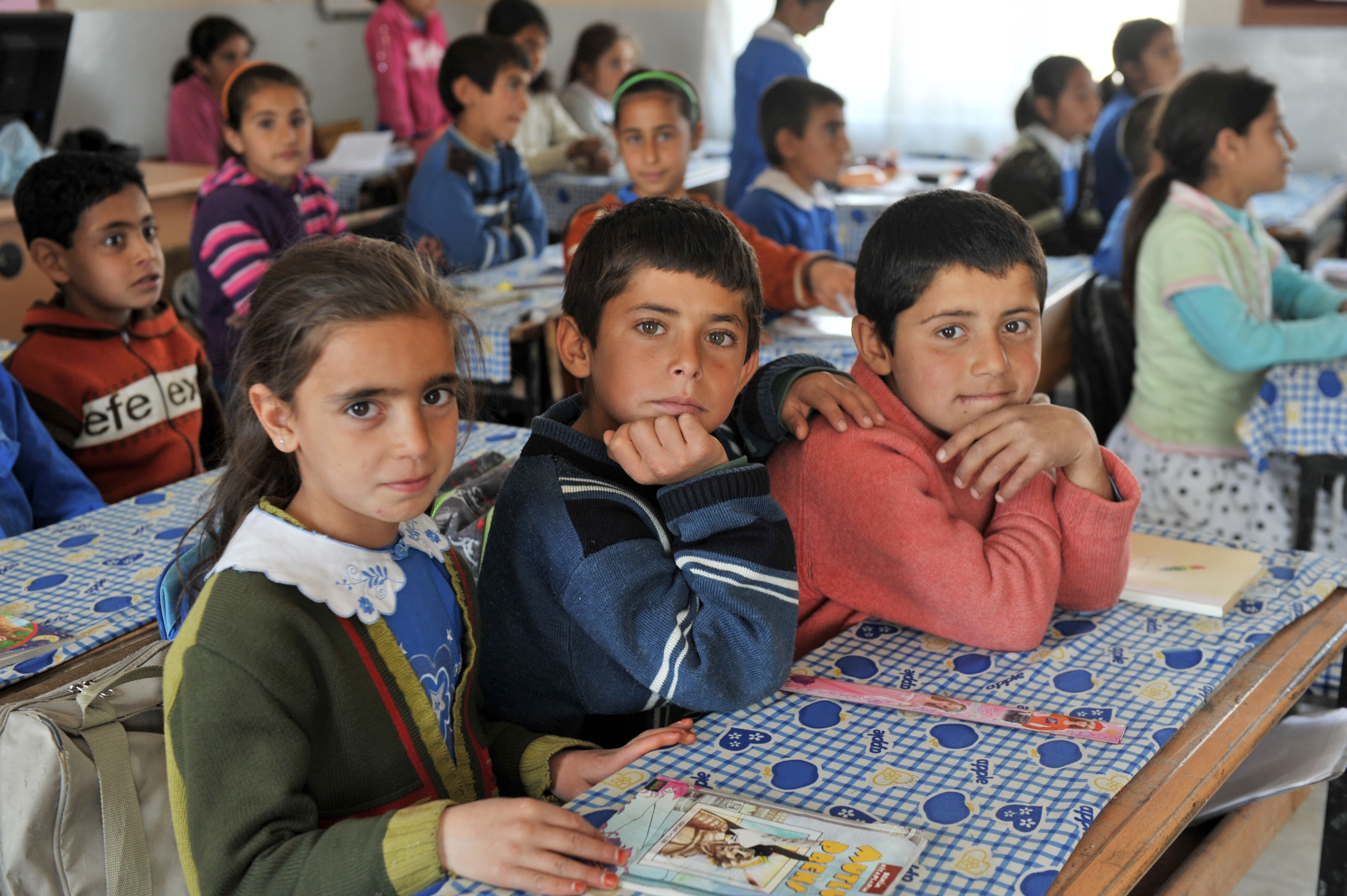
Using national or regional learning assessments to gain results about the proportion of learners meeting the global MPLs has many benefits for countries. The data can be used to report progress towards achieving SDG 4. The additional information gained is also locally and regionally relevant for understanding learning levels of student populations and how these develop over time and across stages of schooling. Being able to benchmark such education monitoring data against global standards provides an important additional perspective on the quality of education systems.
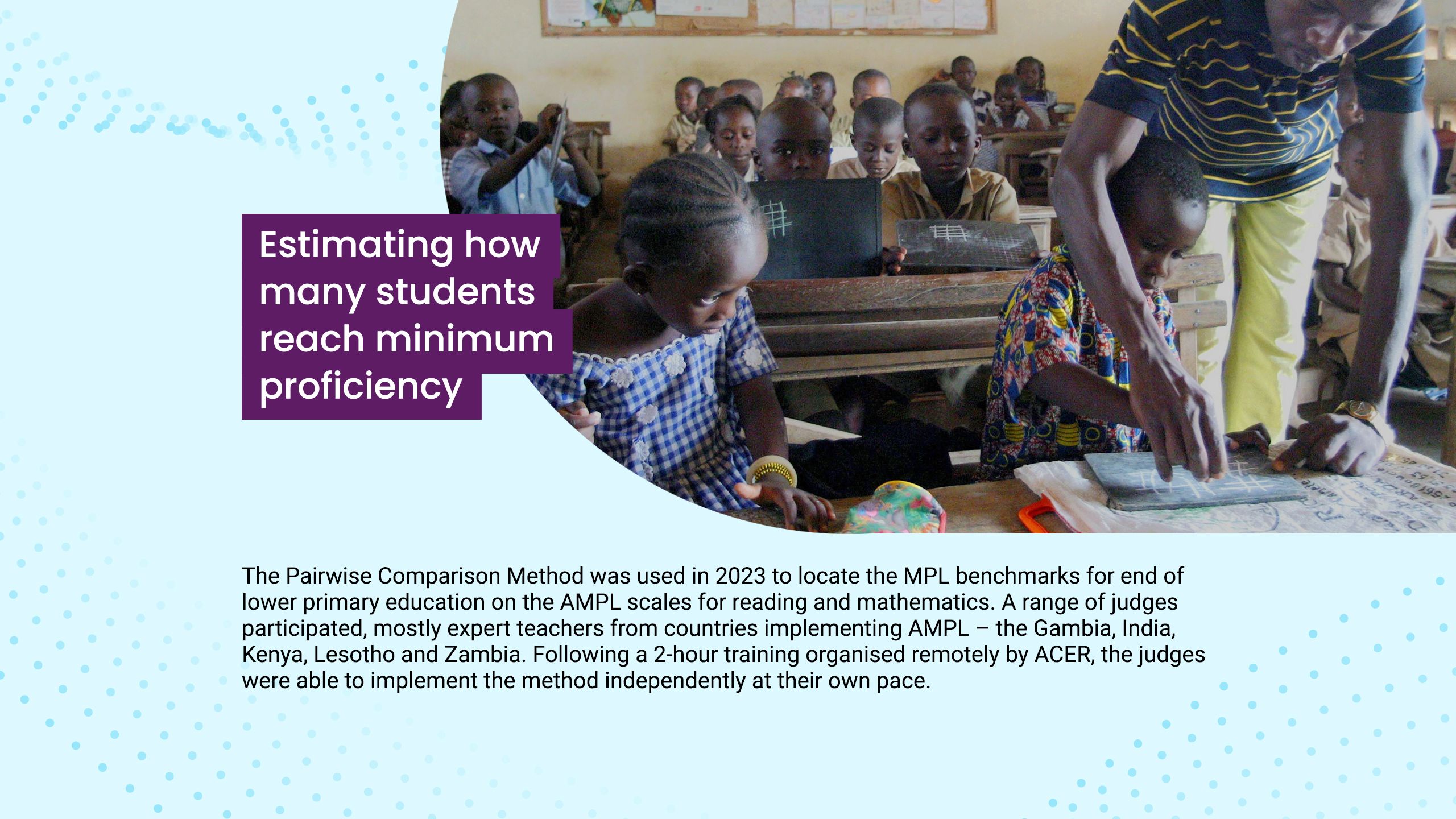

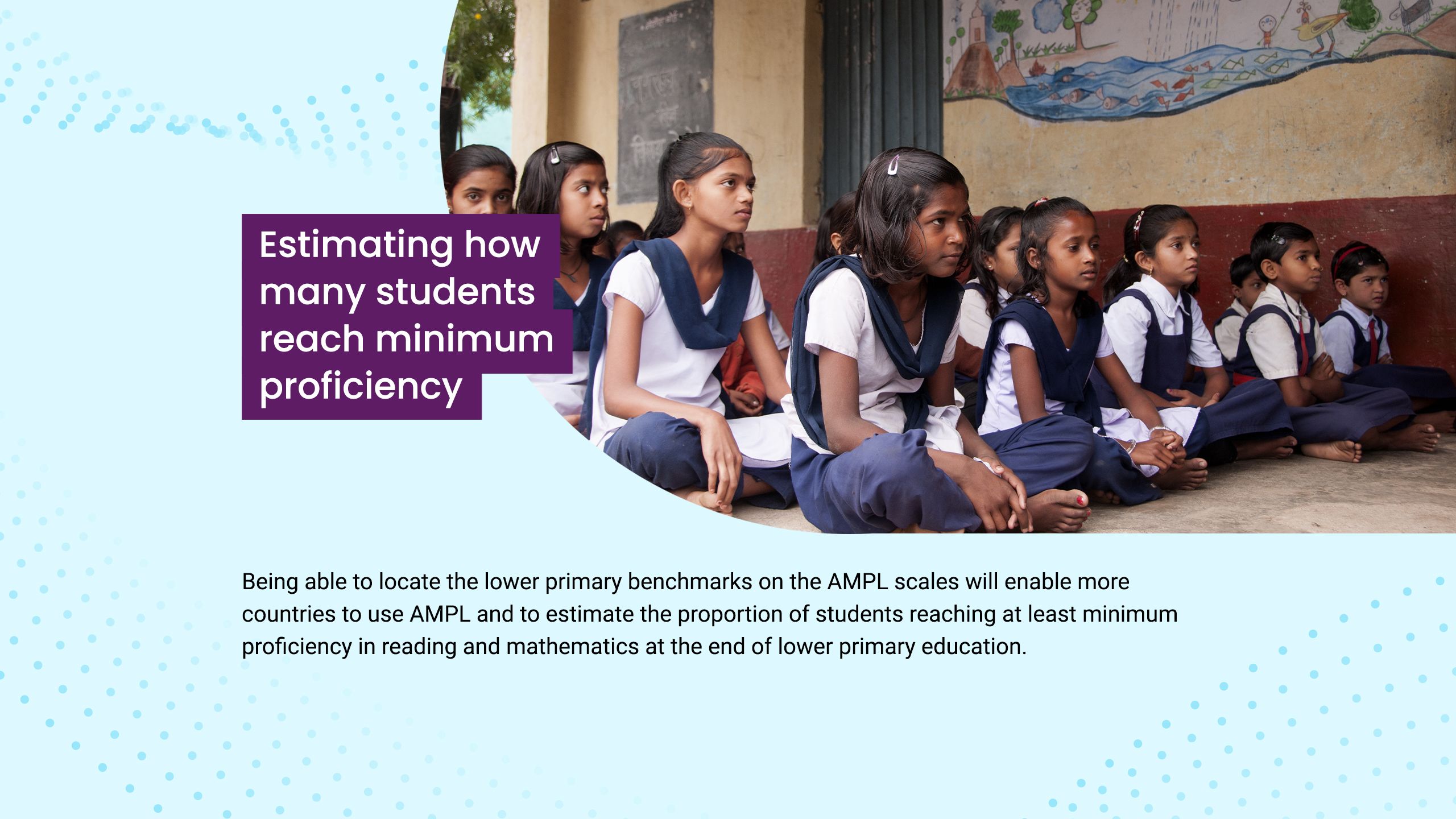
Principles of Good Practice in Learning Assessment
Understanding the quality of large-scale assessments is important for accurate reporting of progress towards SDG 4. ACER has developed the Principles of Good Practice in Learning Assessment, an independent collection of good practices that accommodates the diversity of large-scale assessments around the world.
The Principles of Good Practice in Learning Assessment provide a conceptual framework to evaluate the quality of large-scale assessments. It also enables countries to investigate their capacity to develop, implement and use data from large-scale assessments to improve learning. The principles form part of the UIS’ resources for countries to report progress towards SDG 4.

